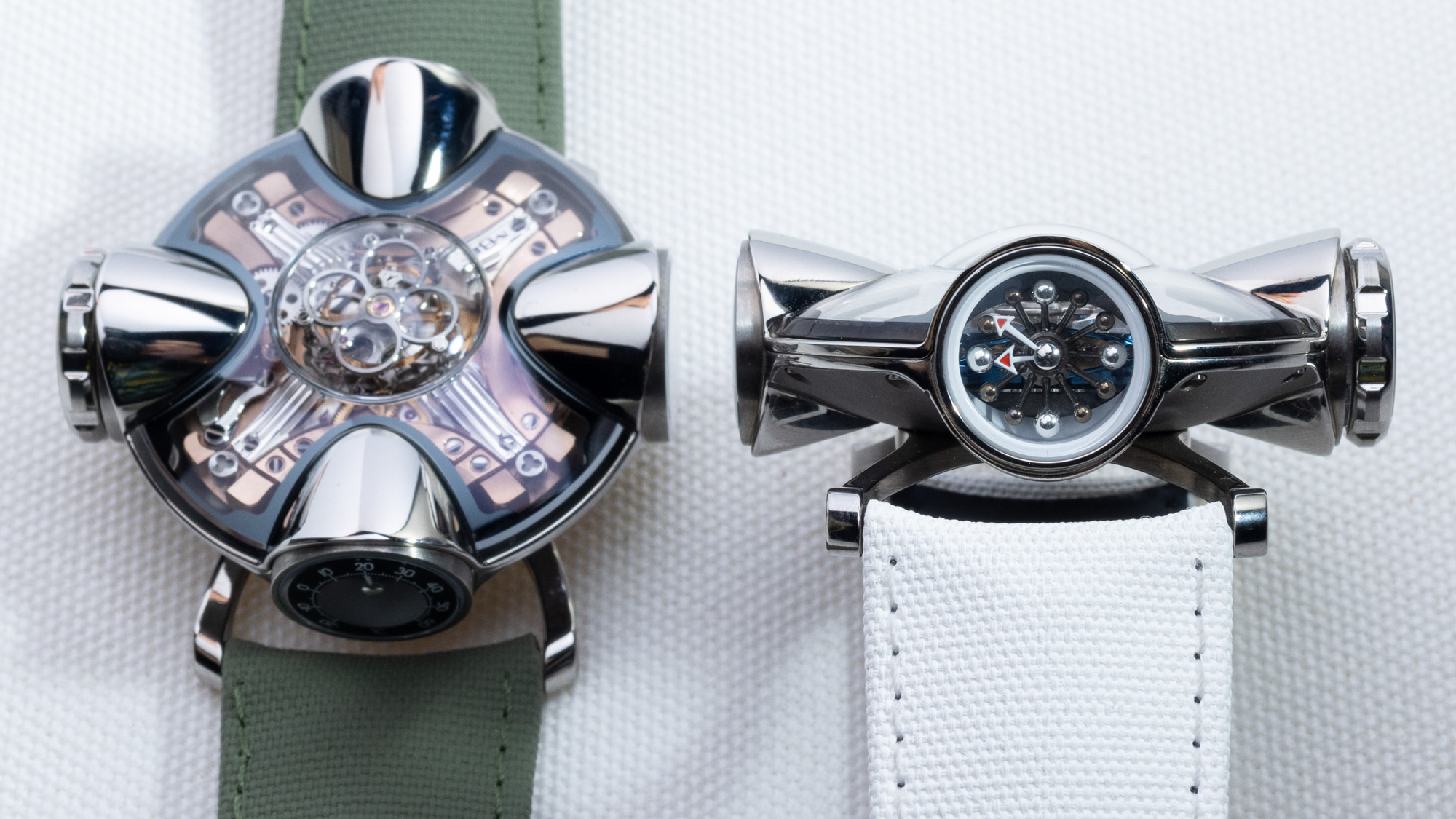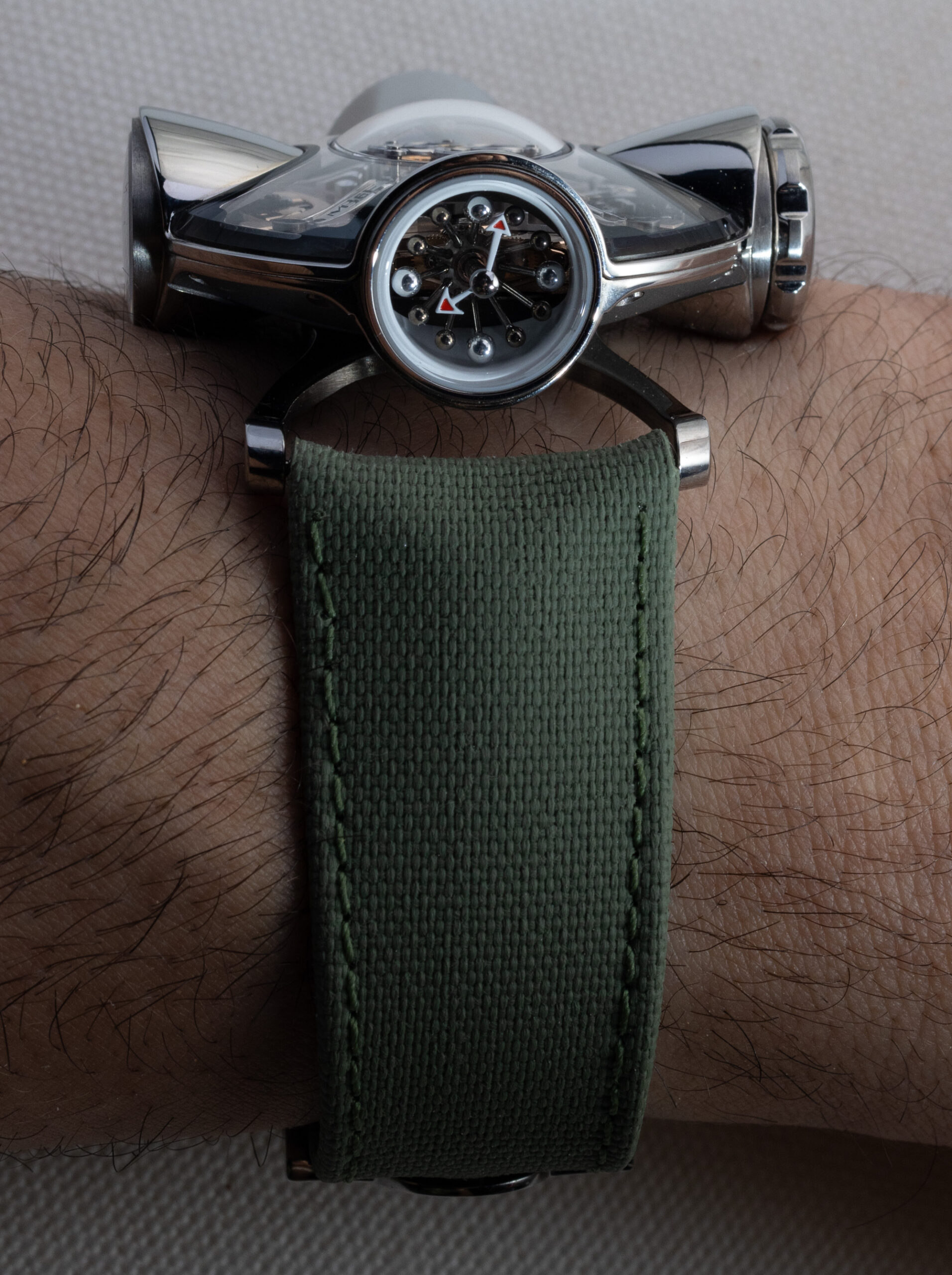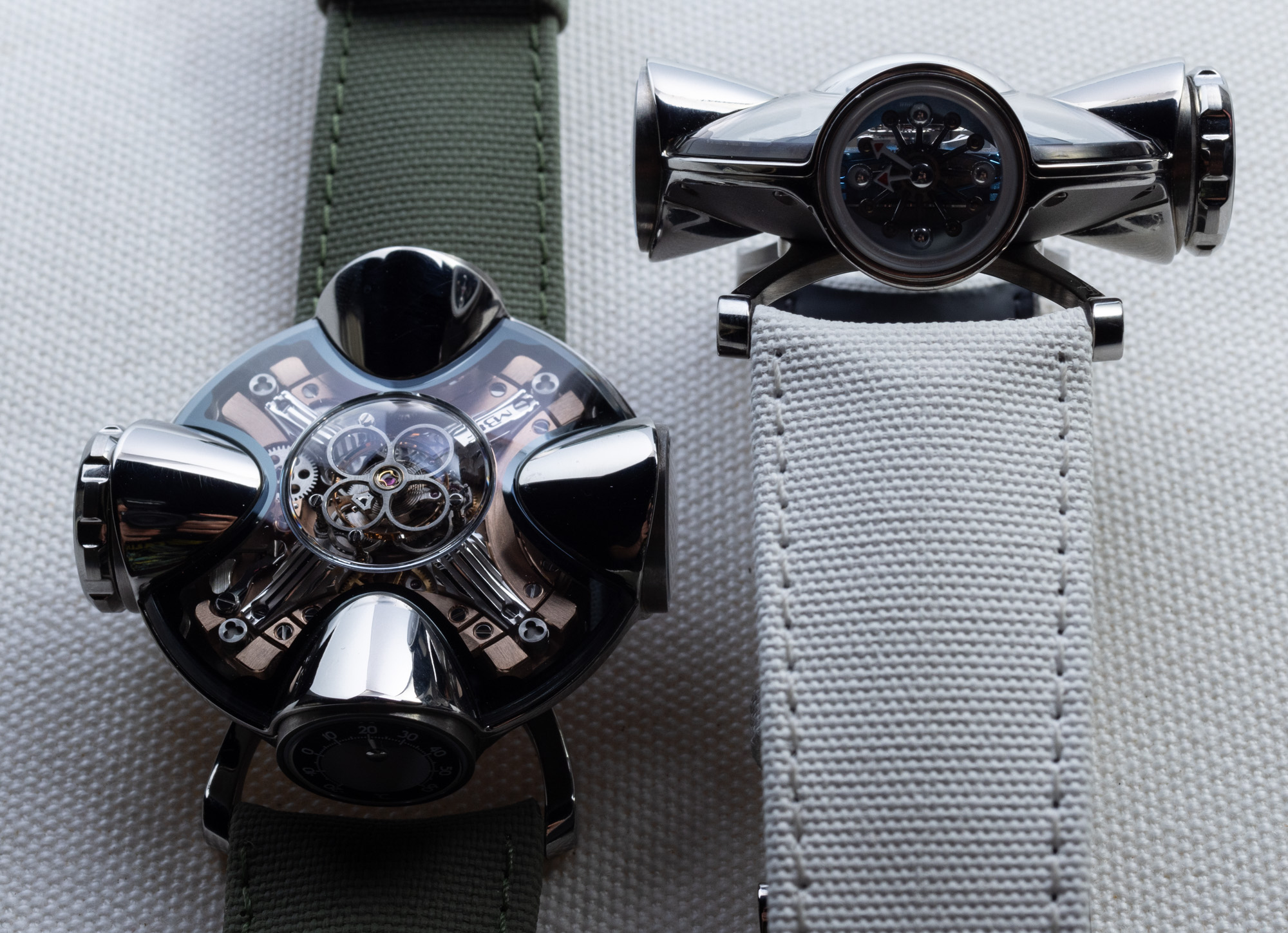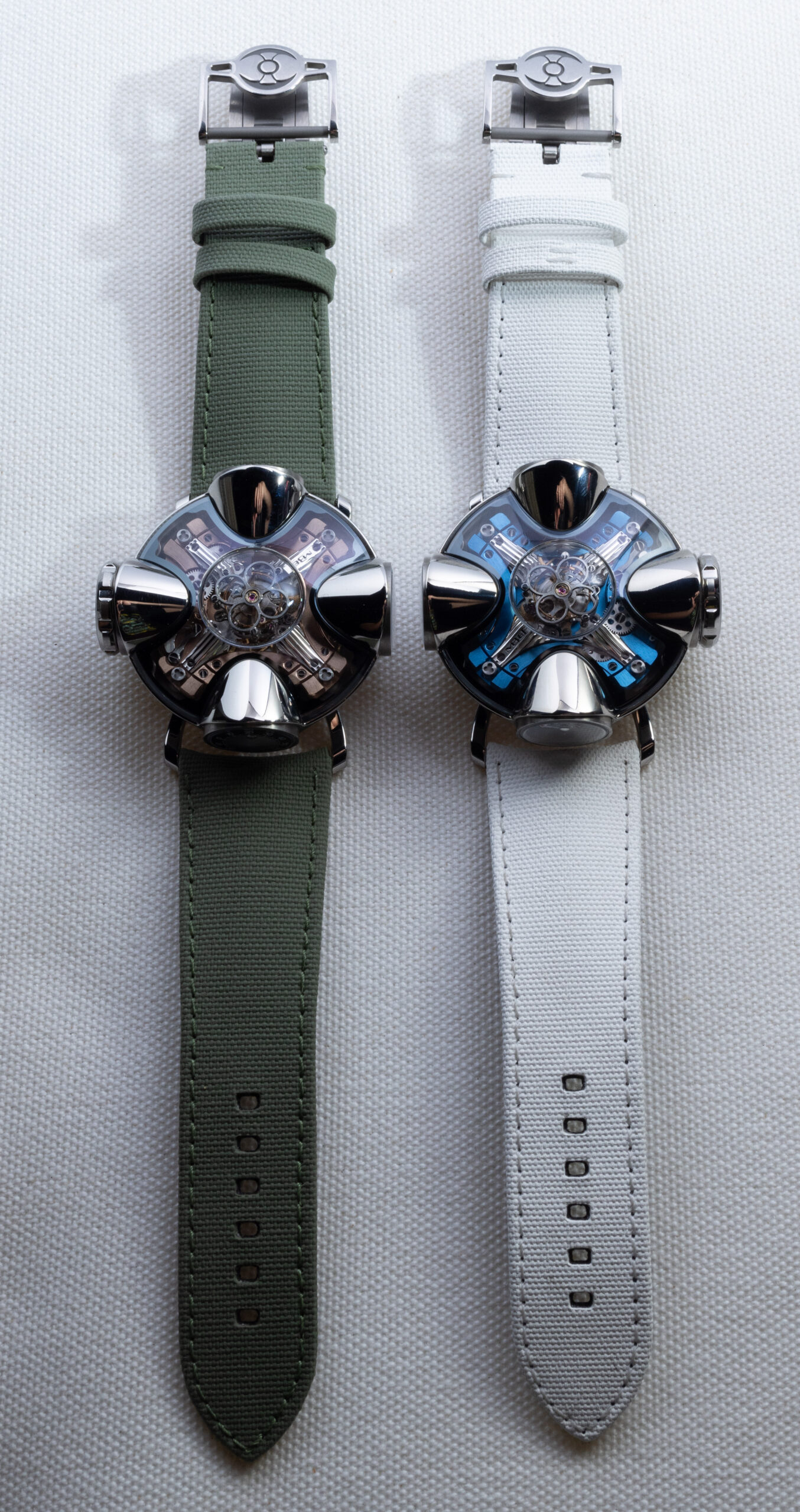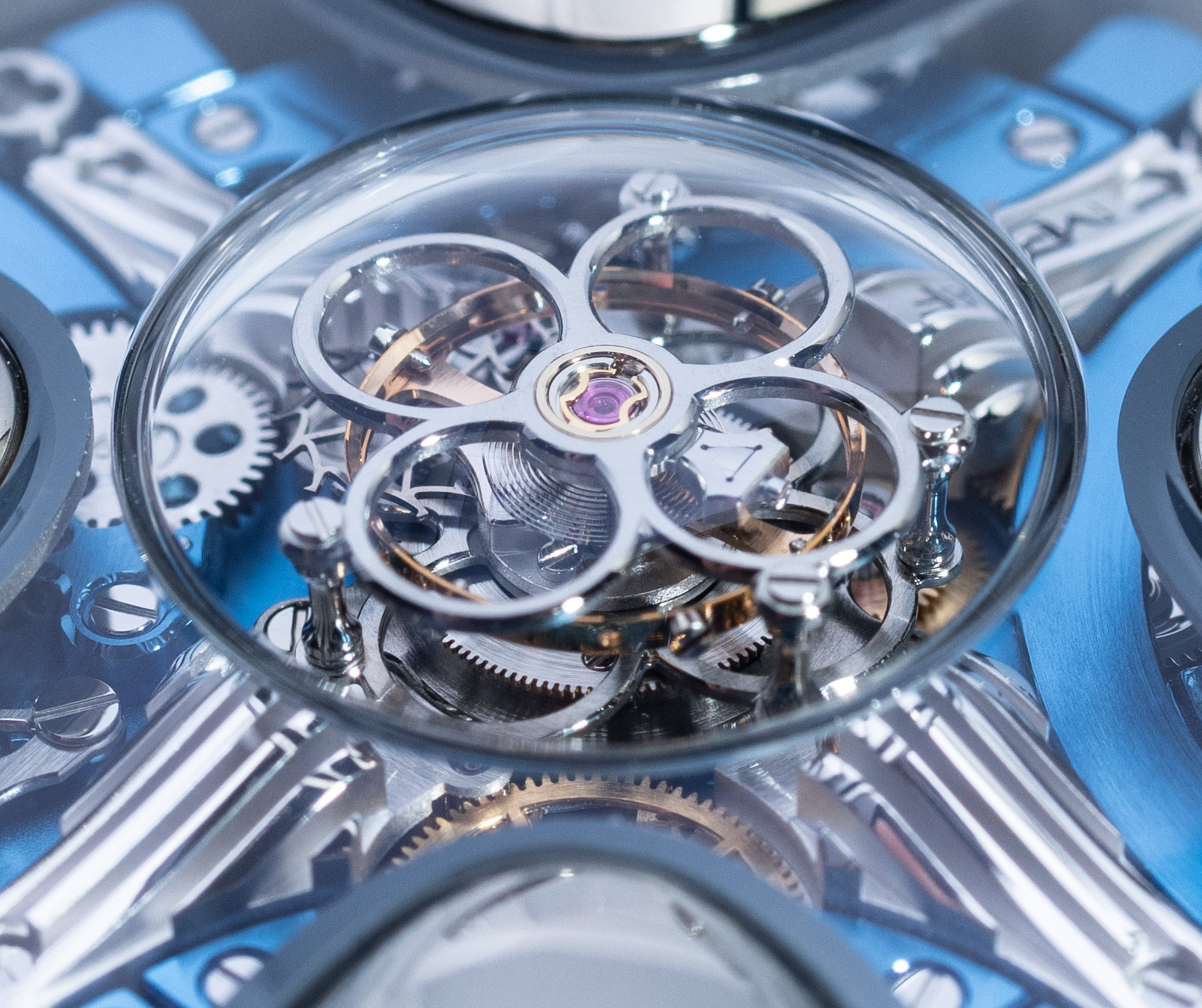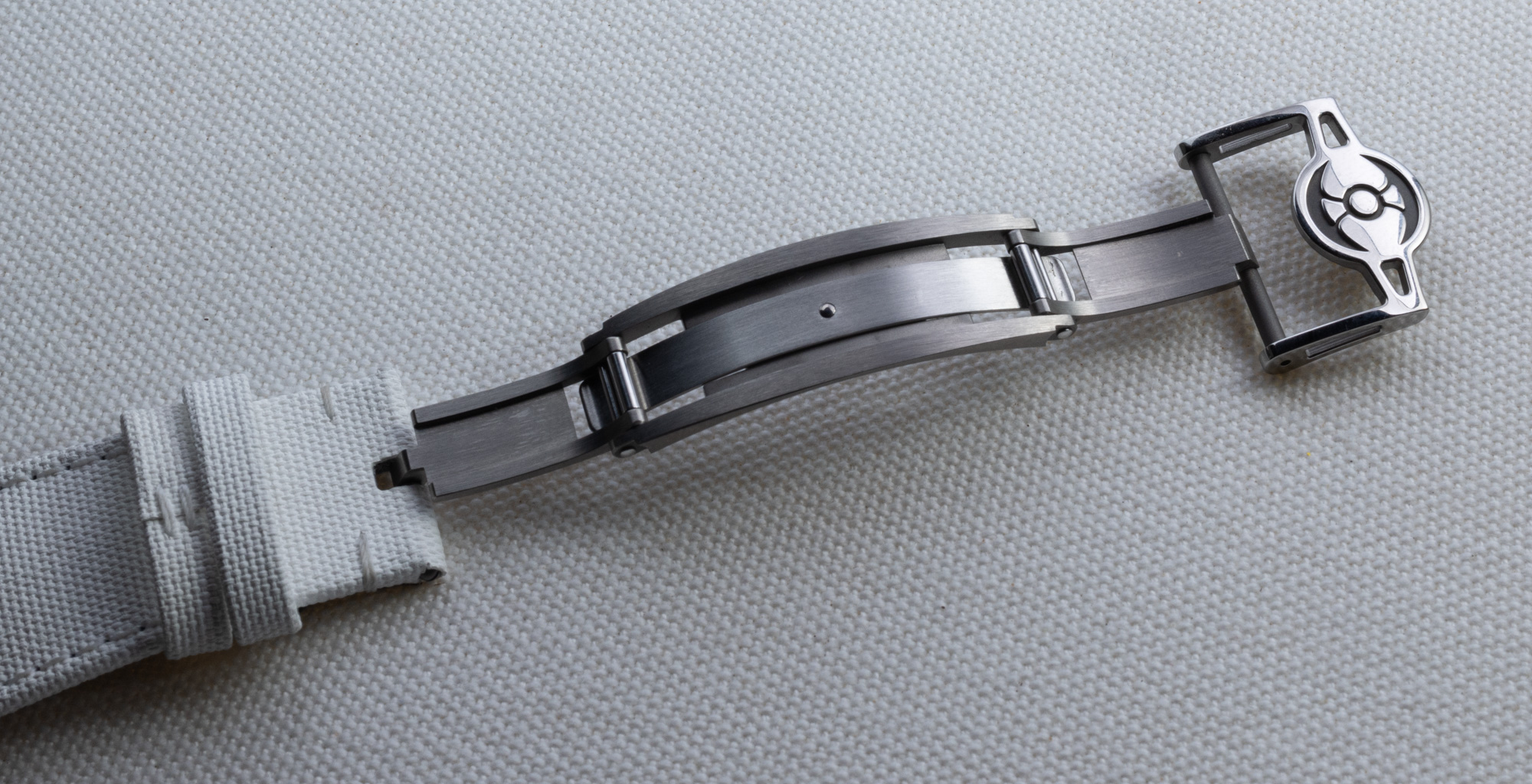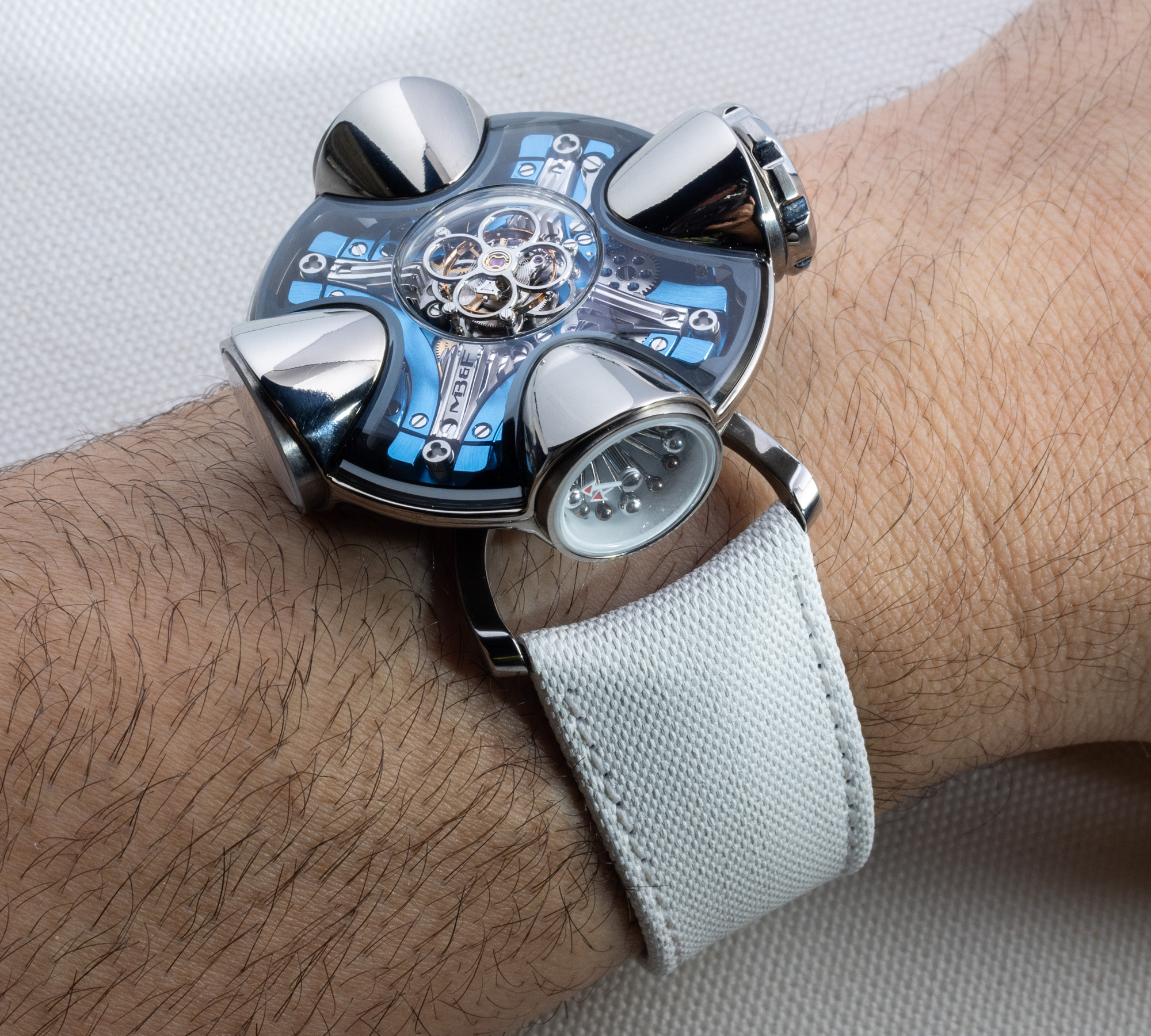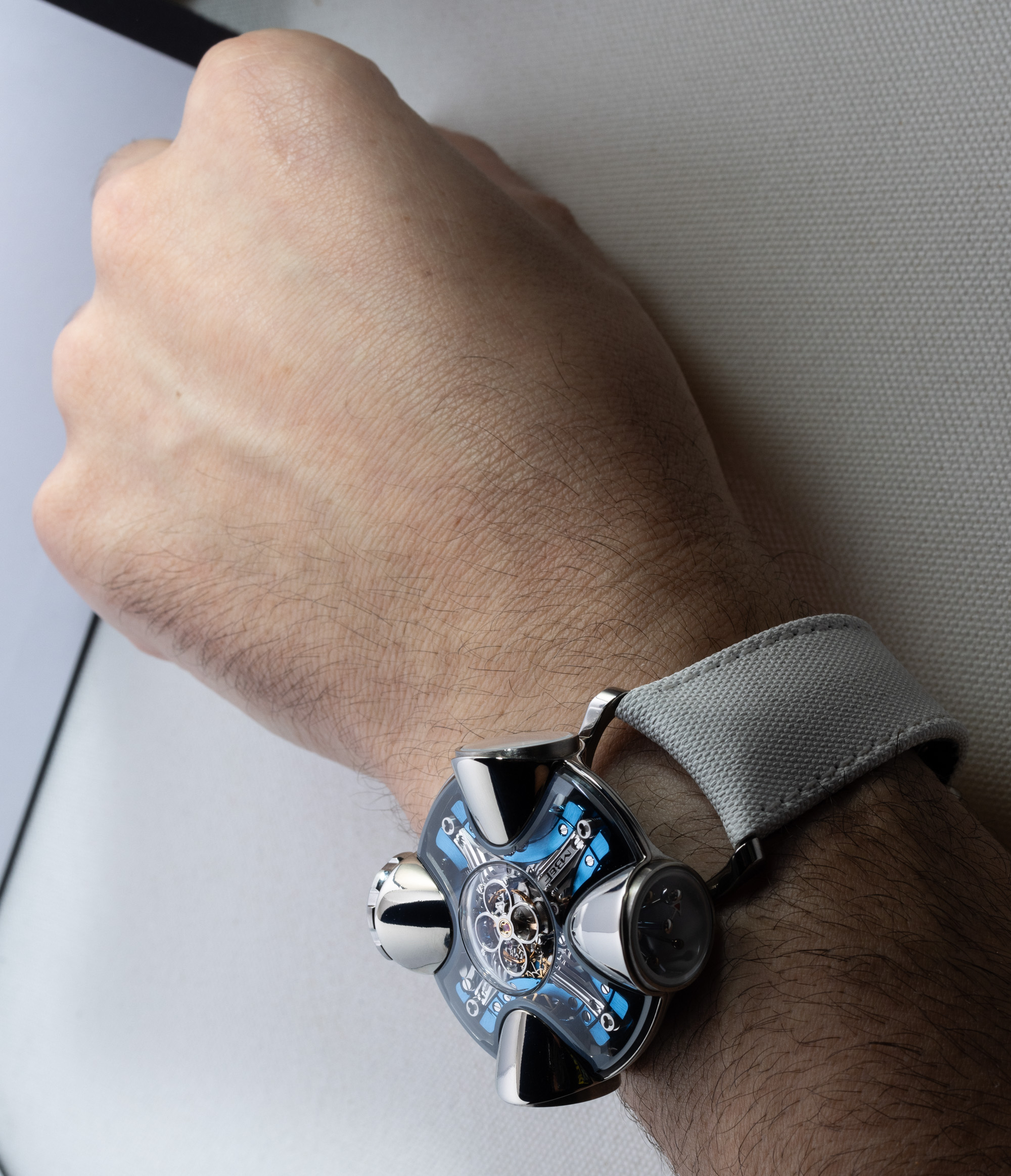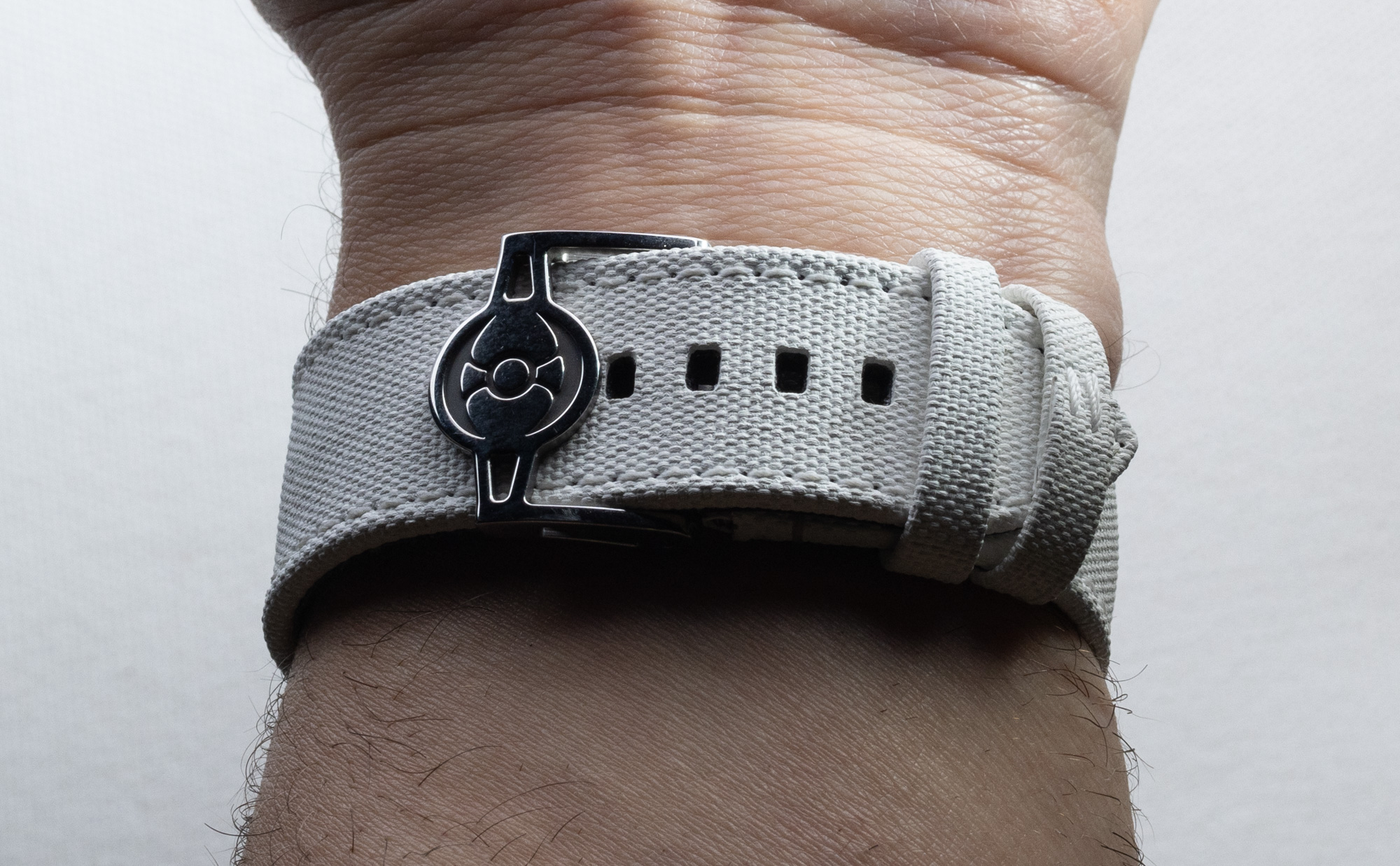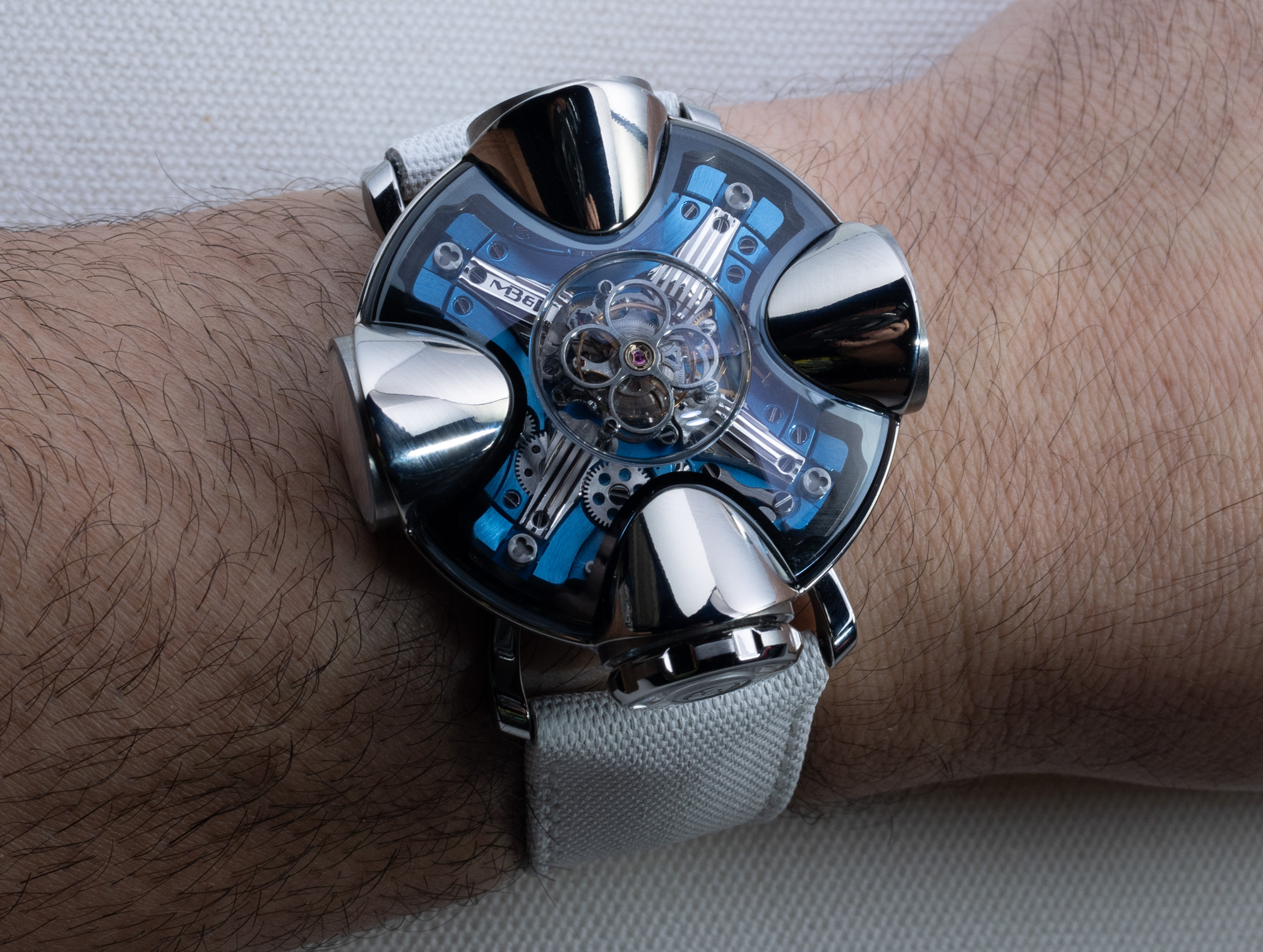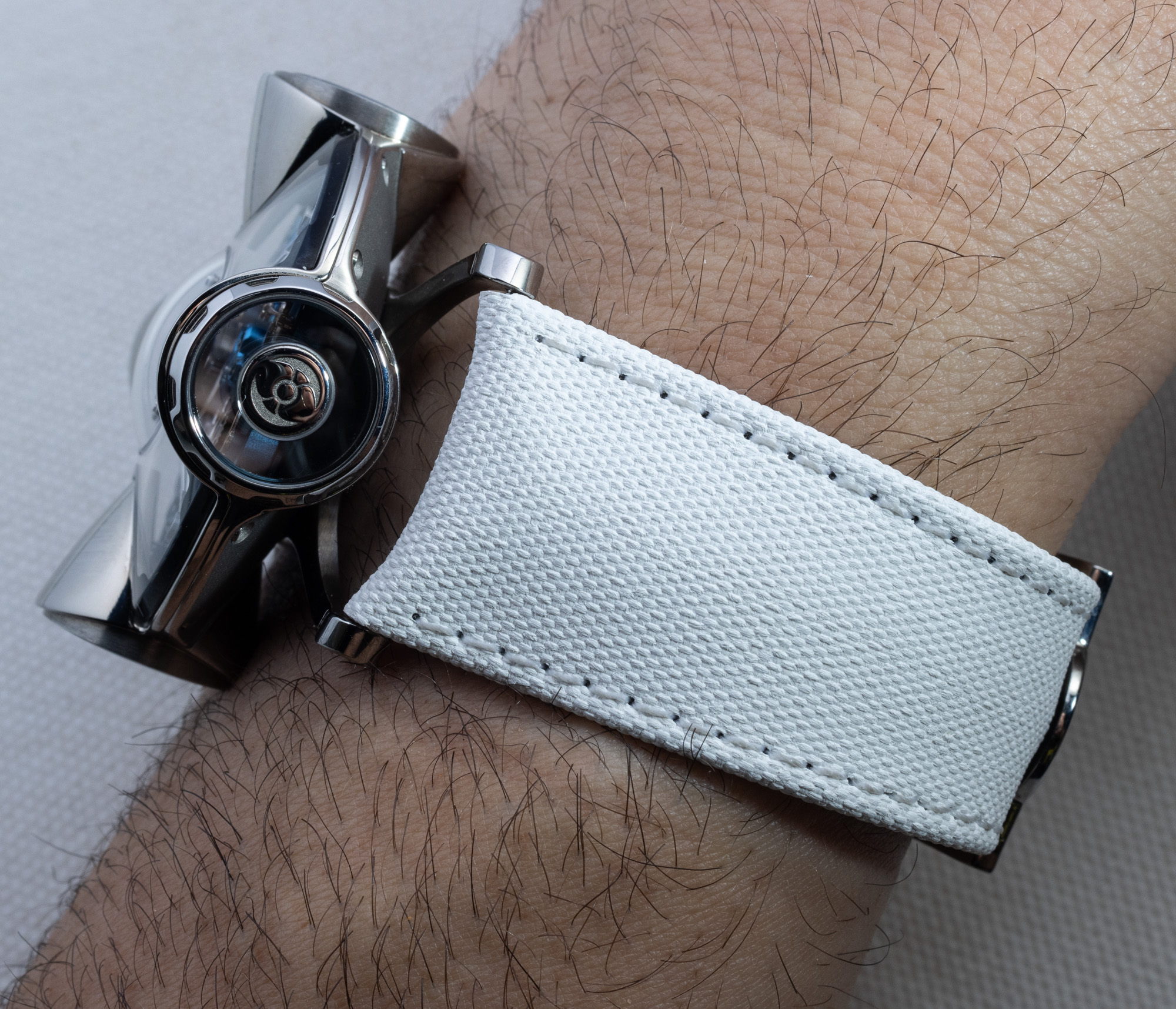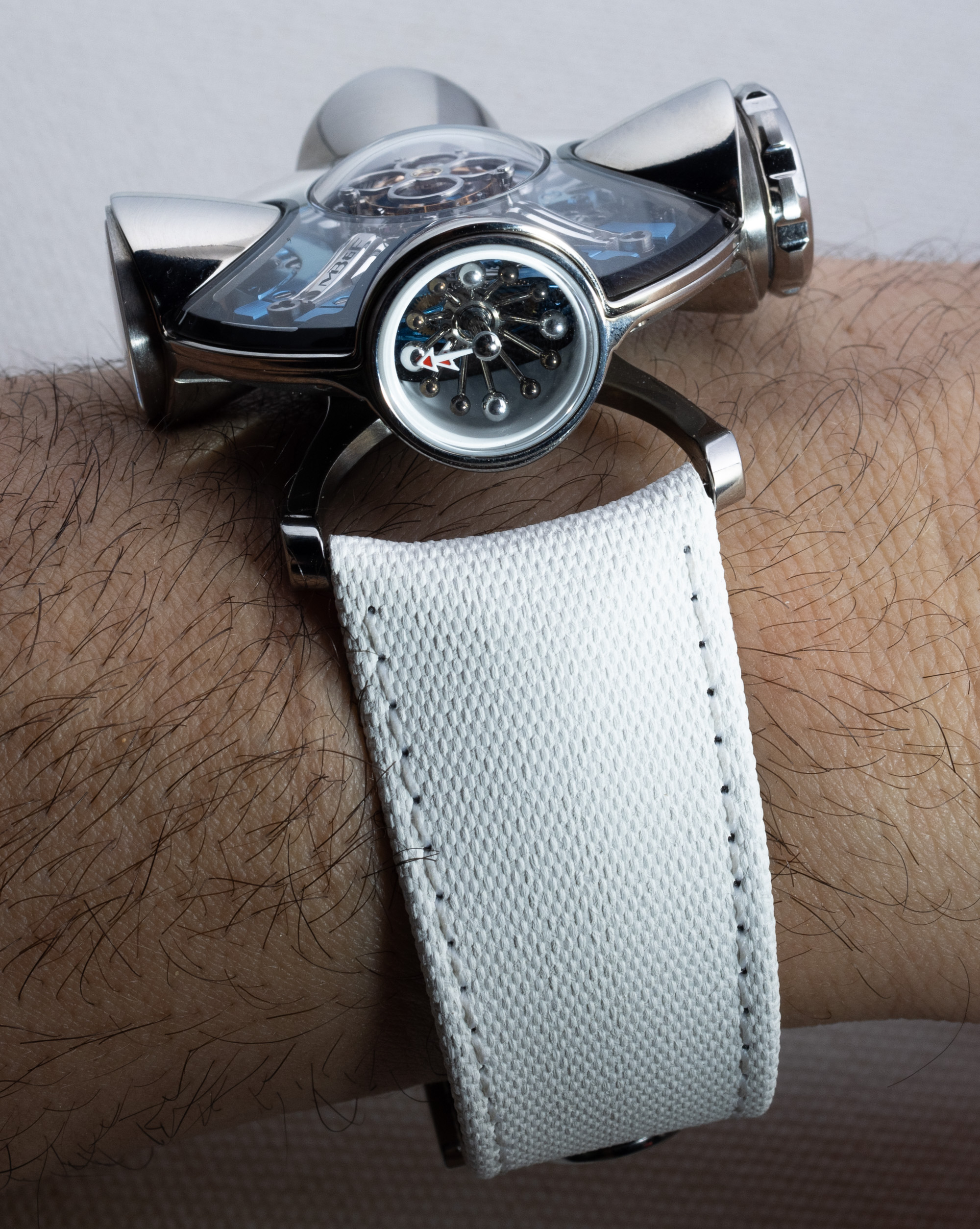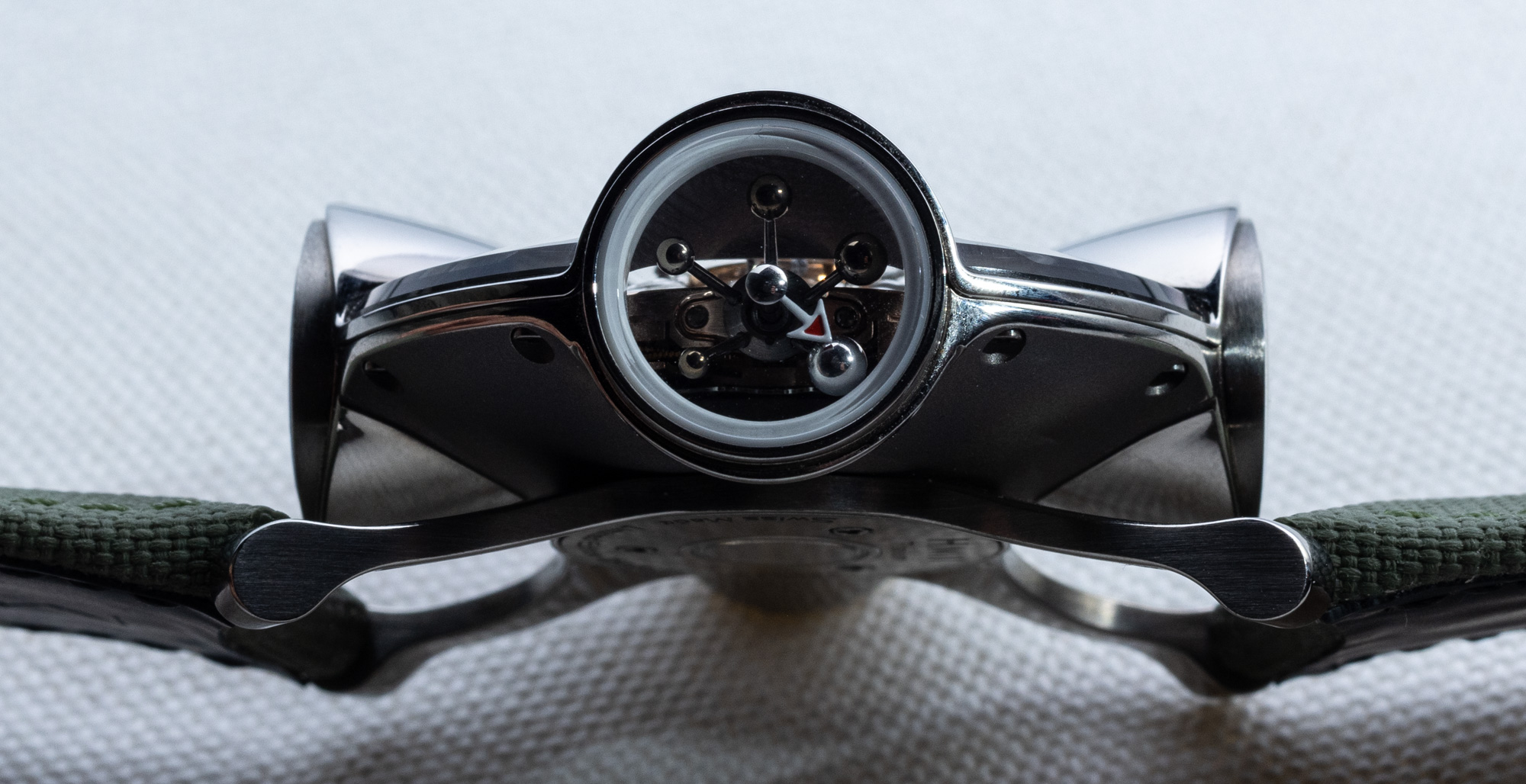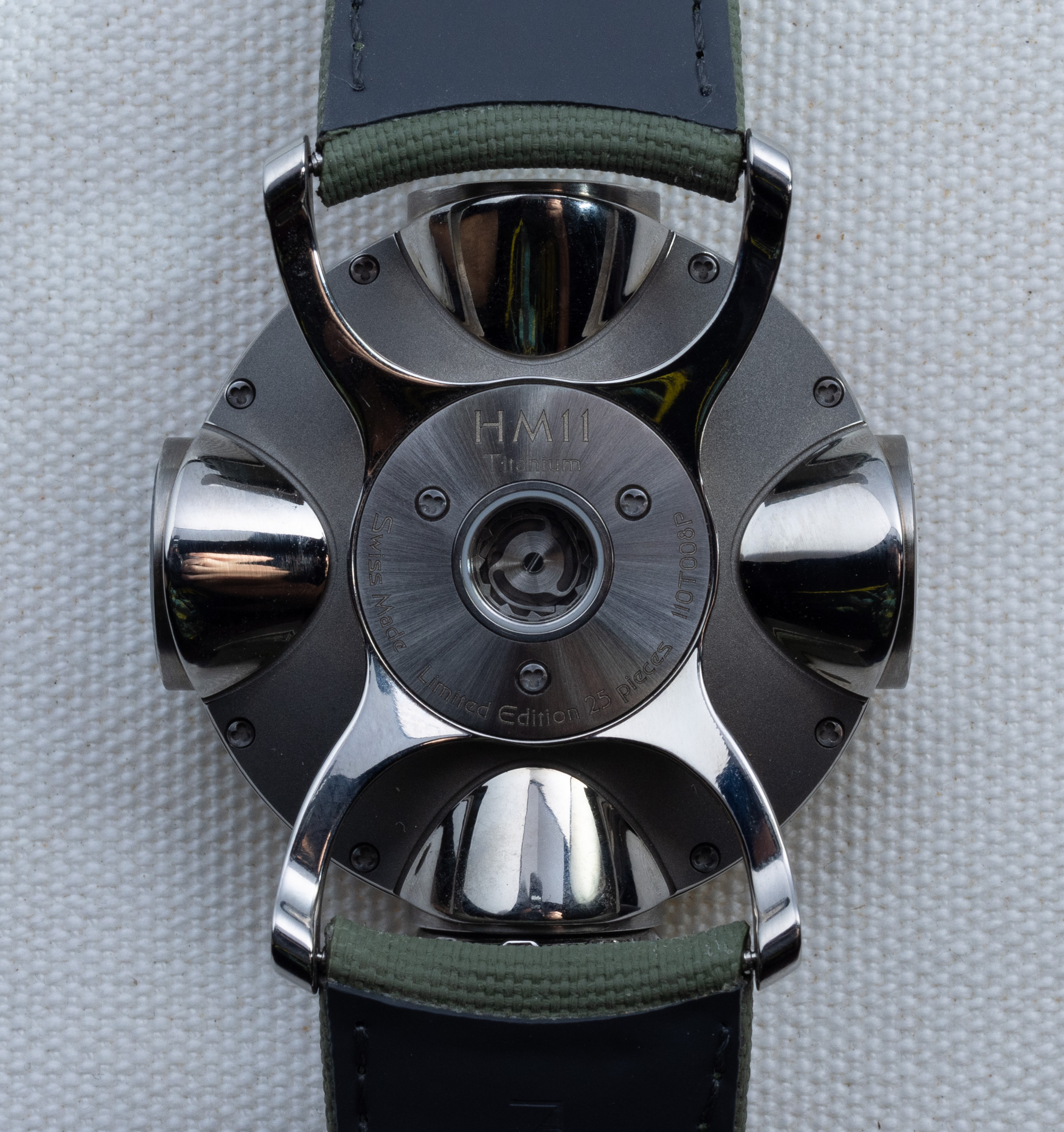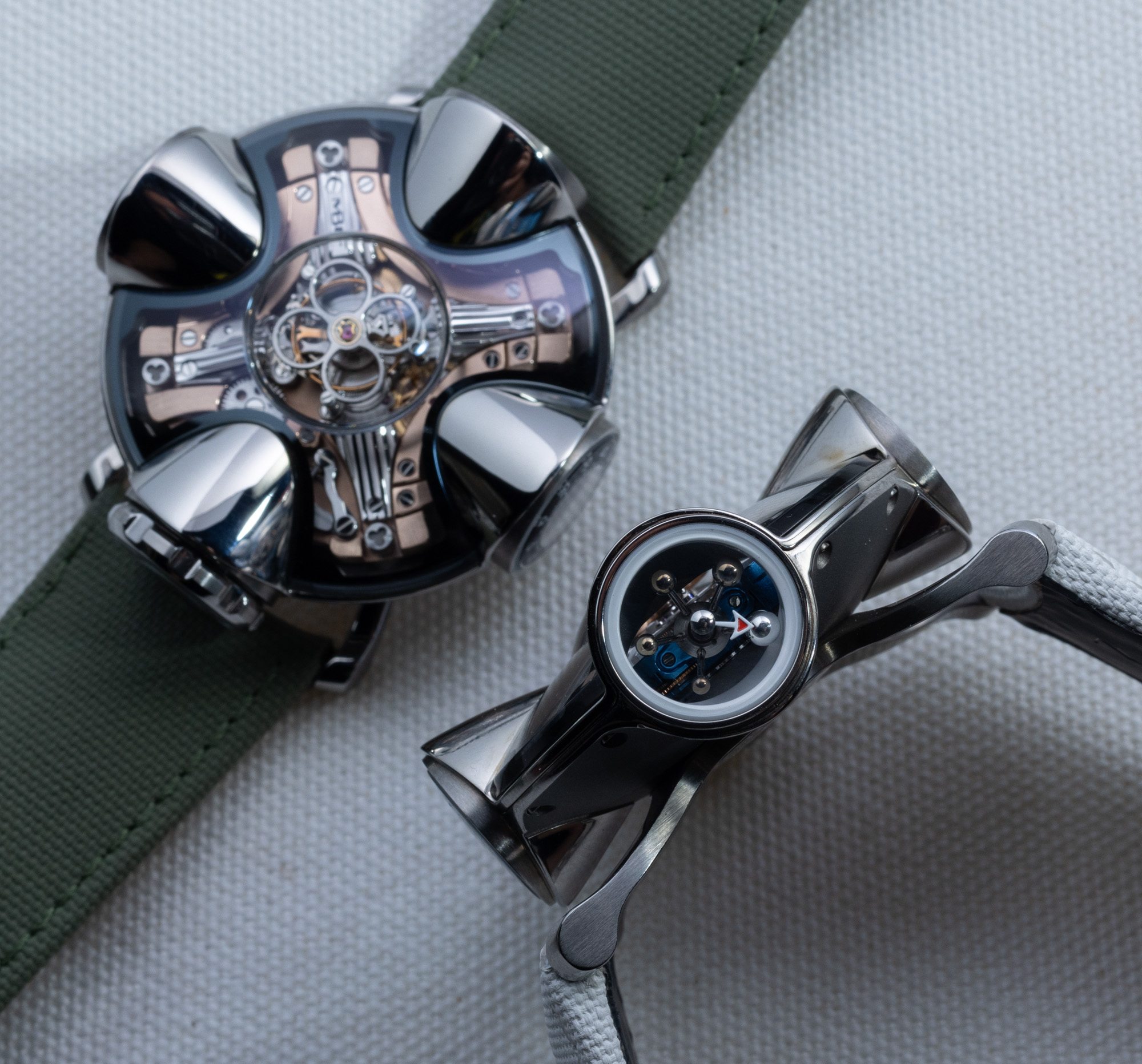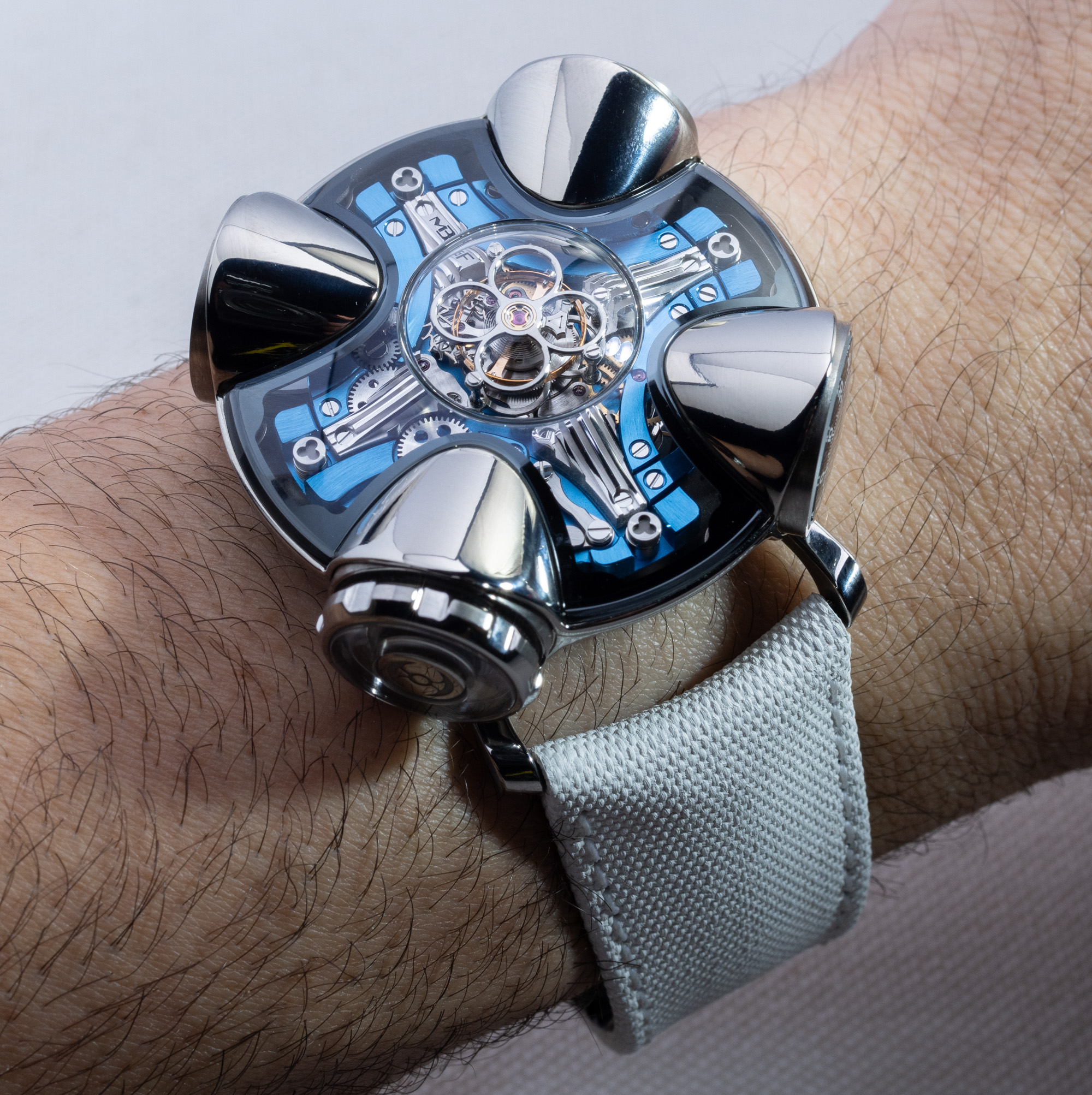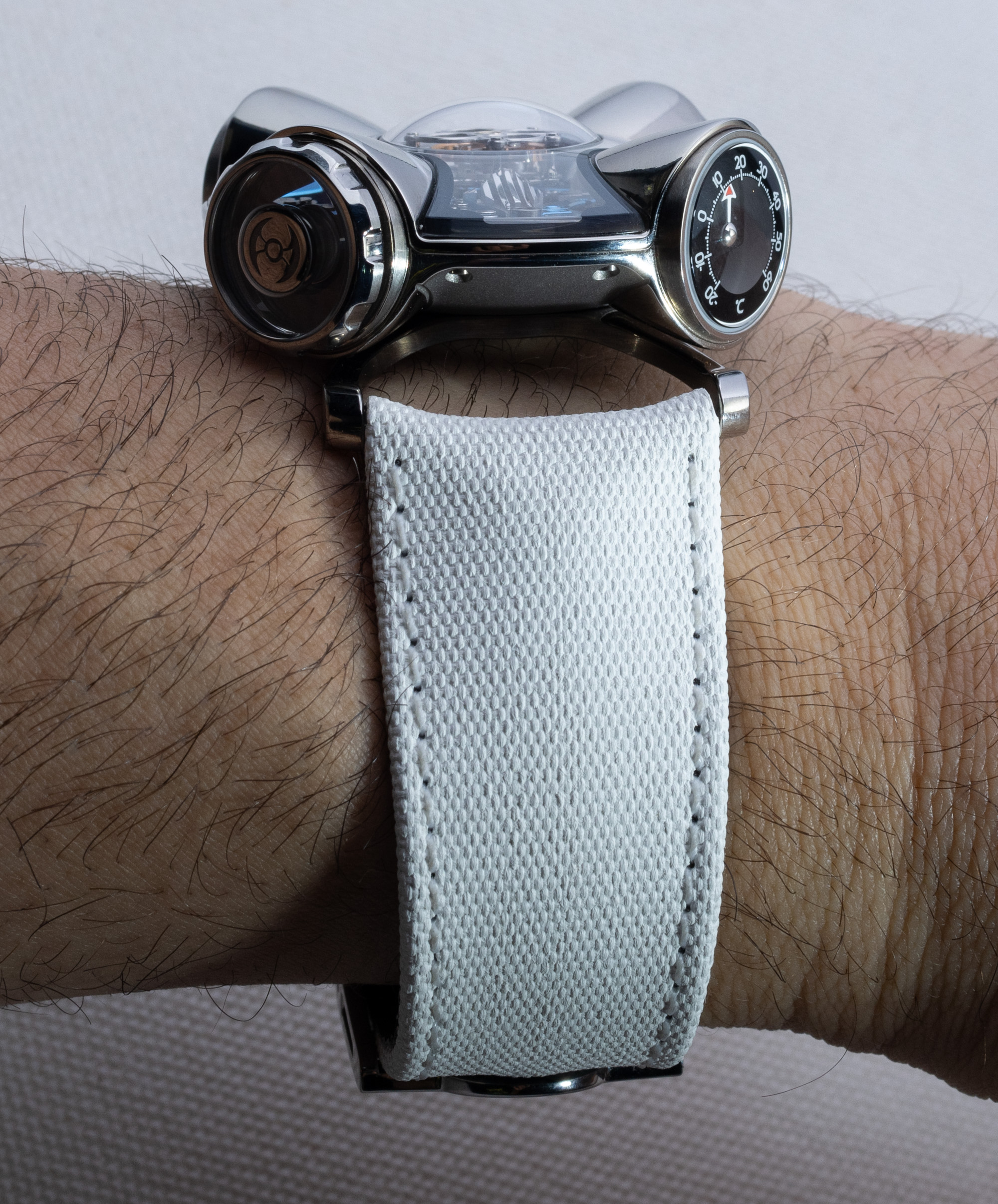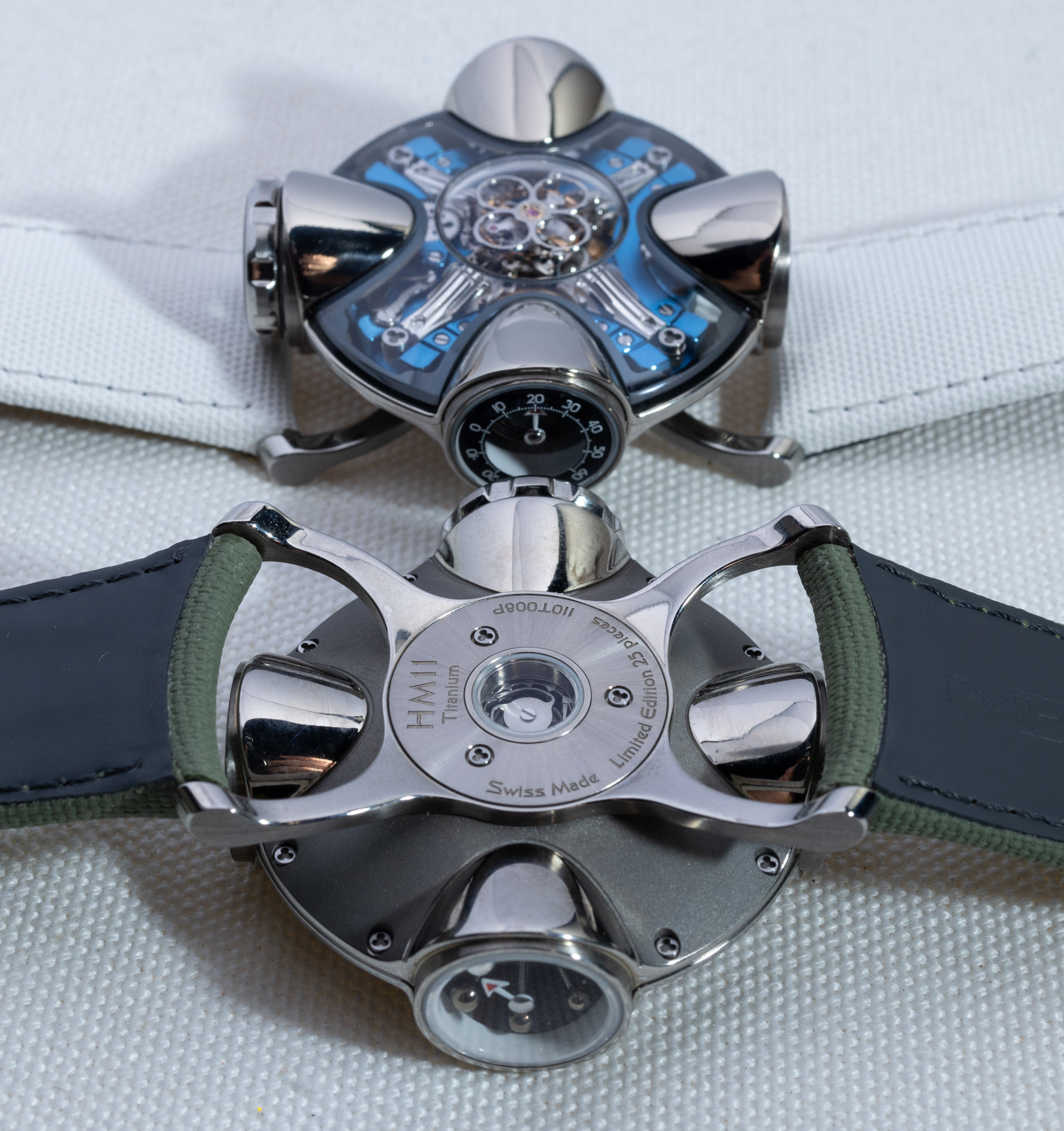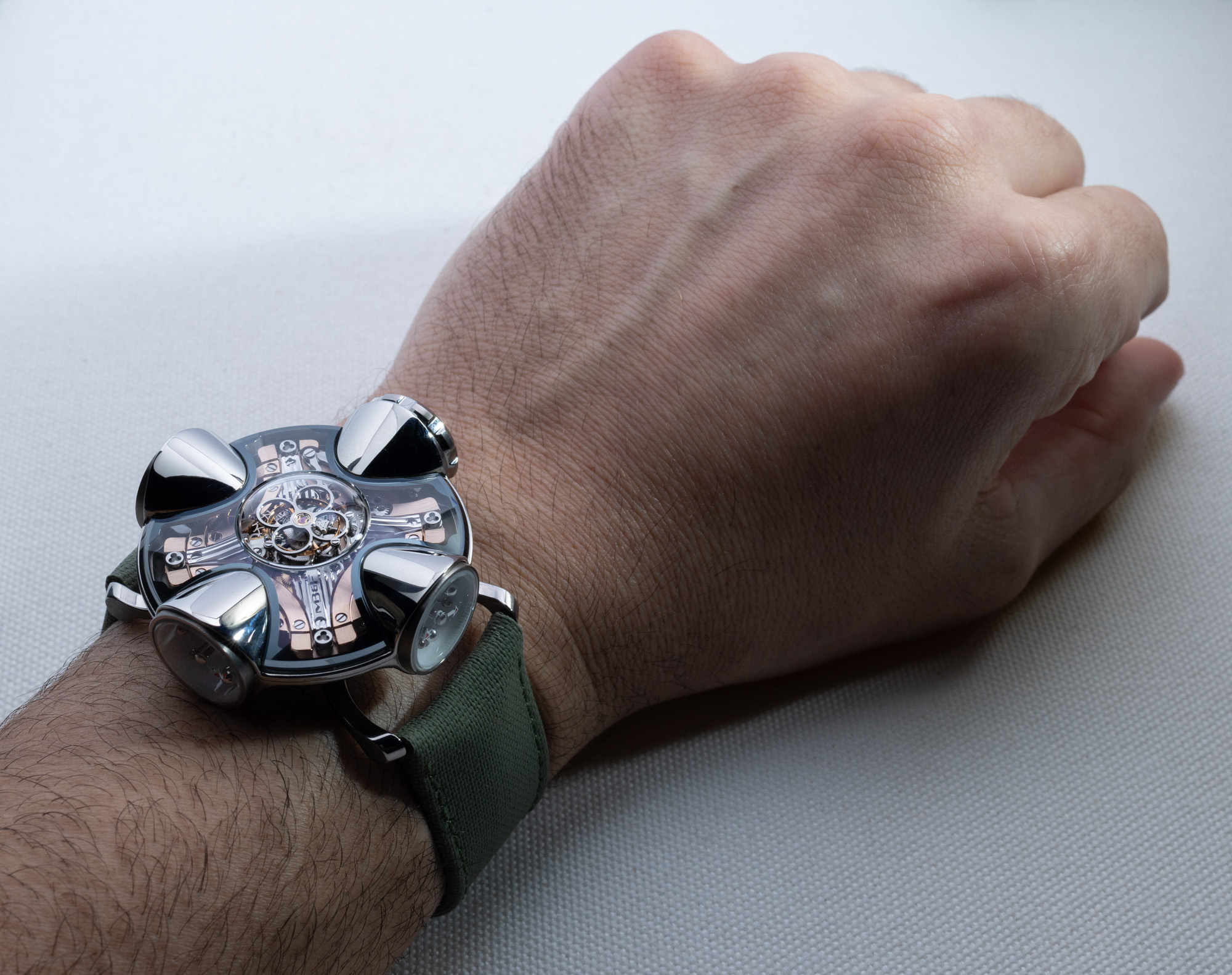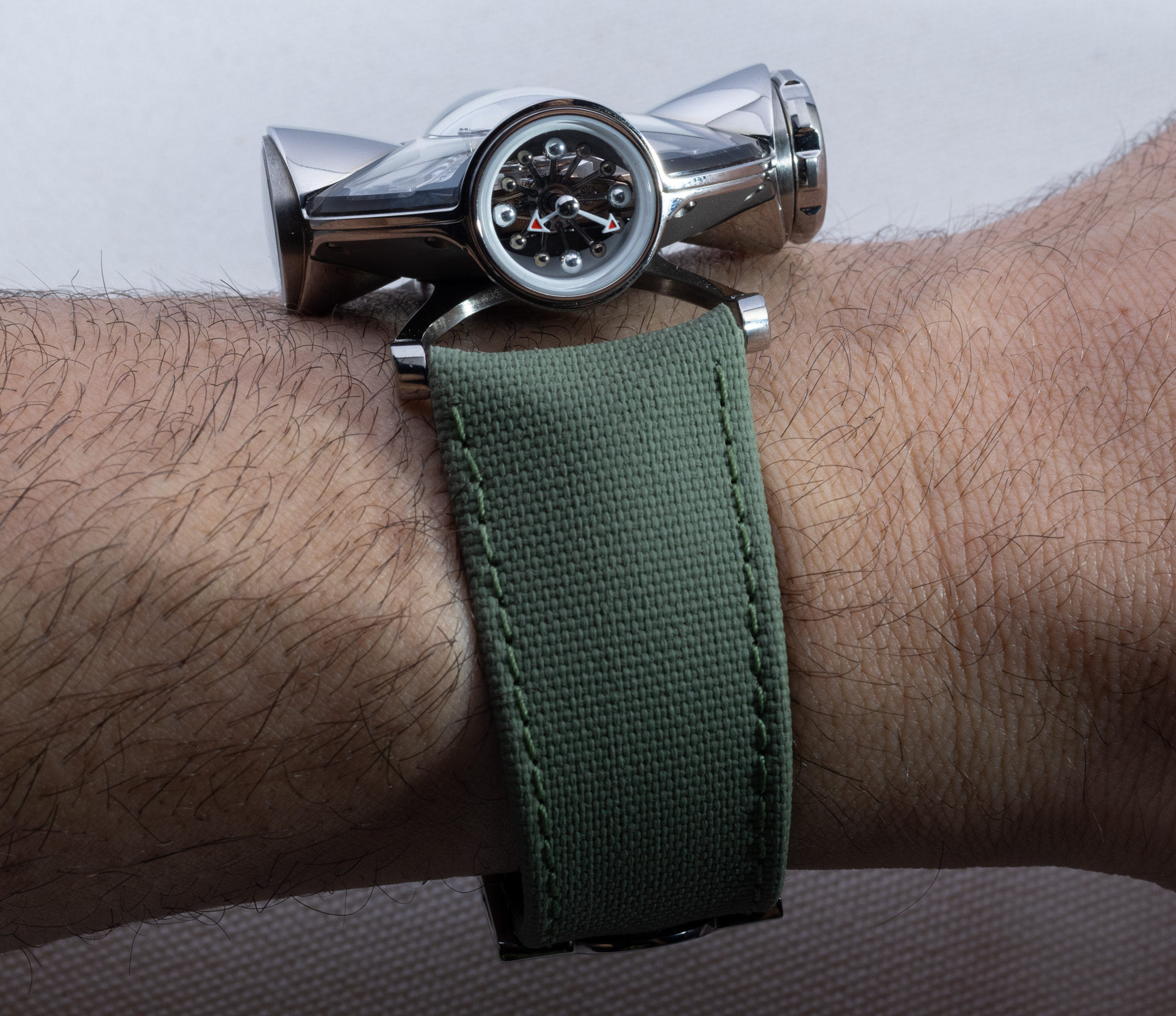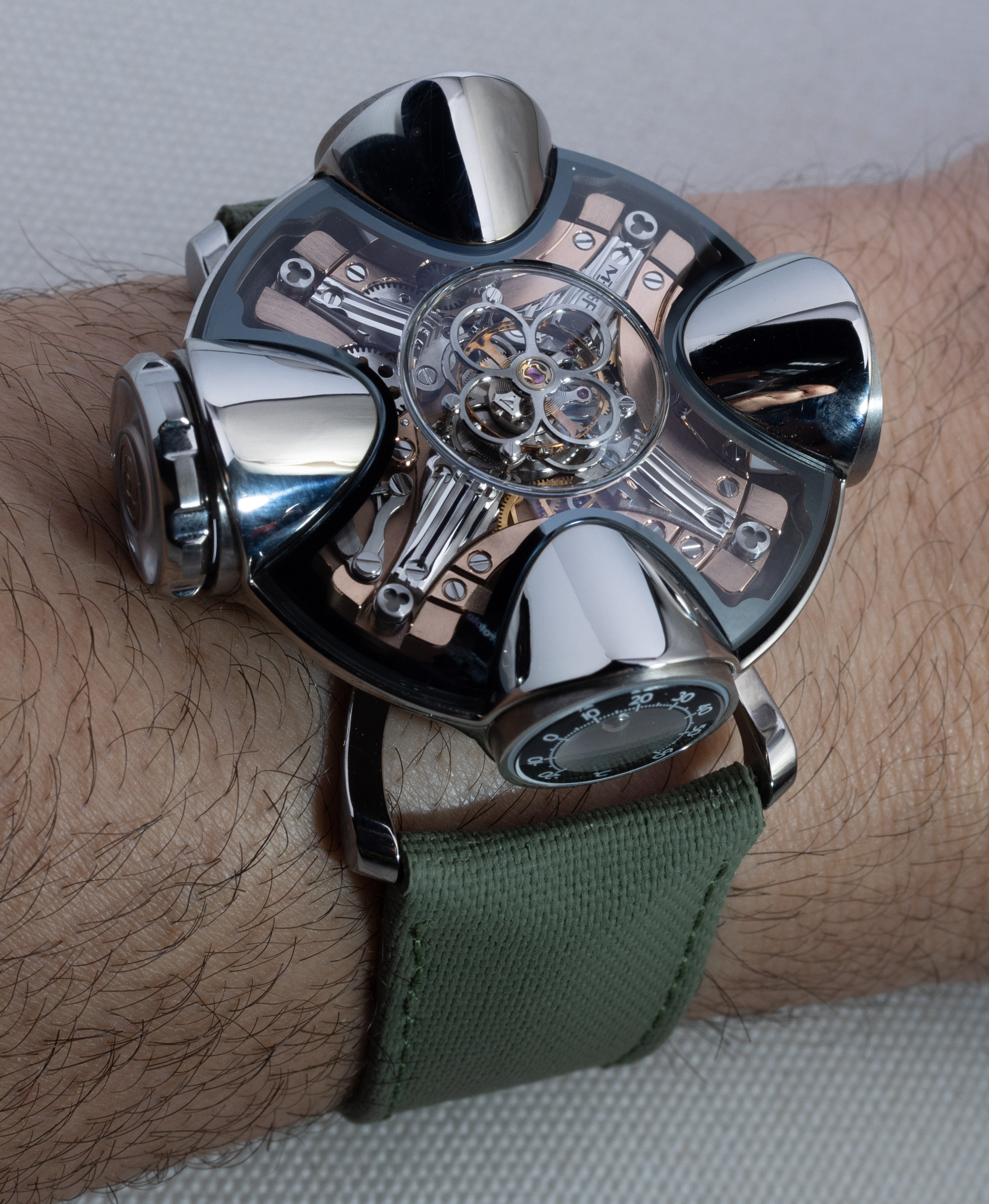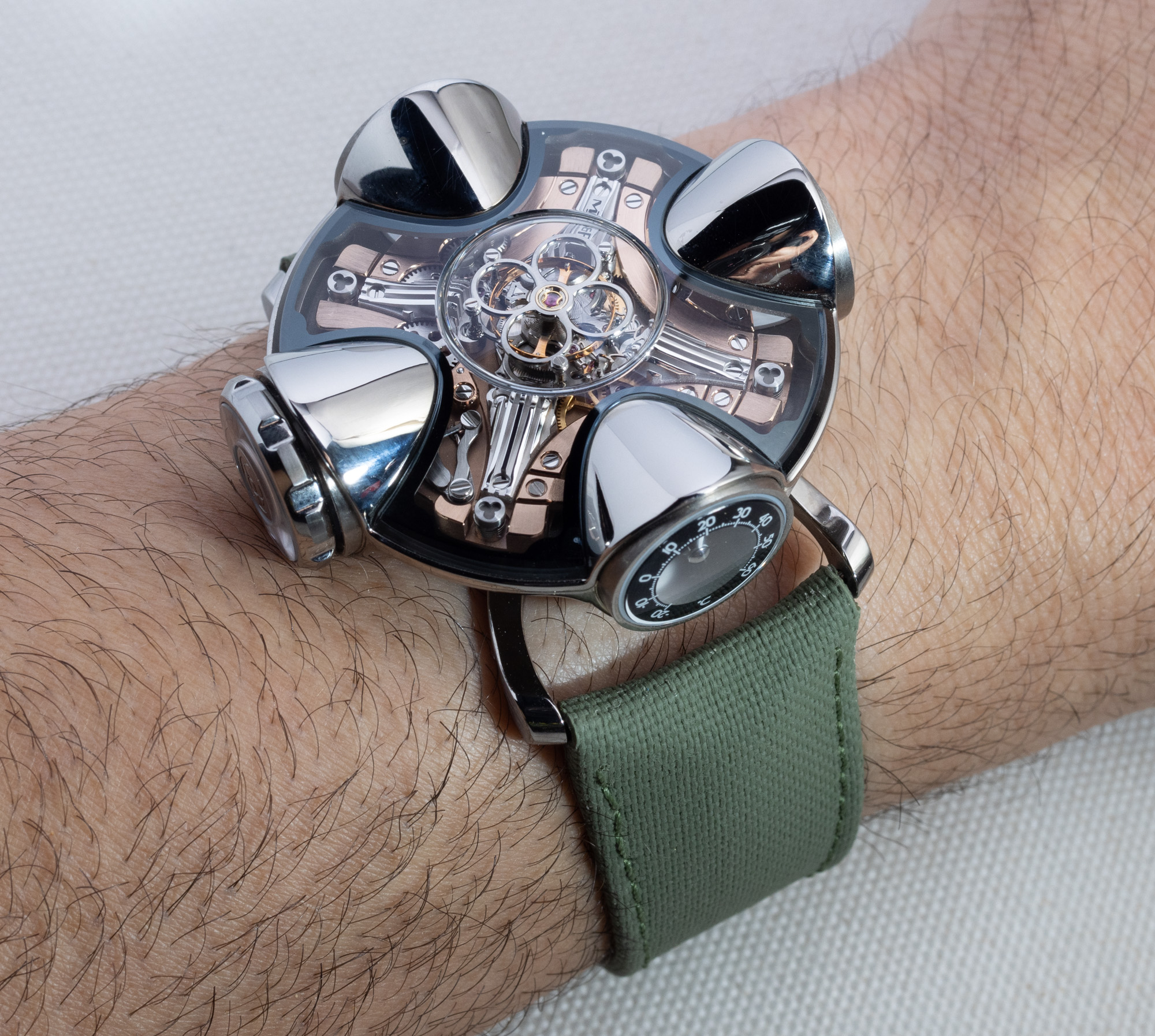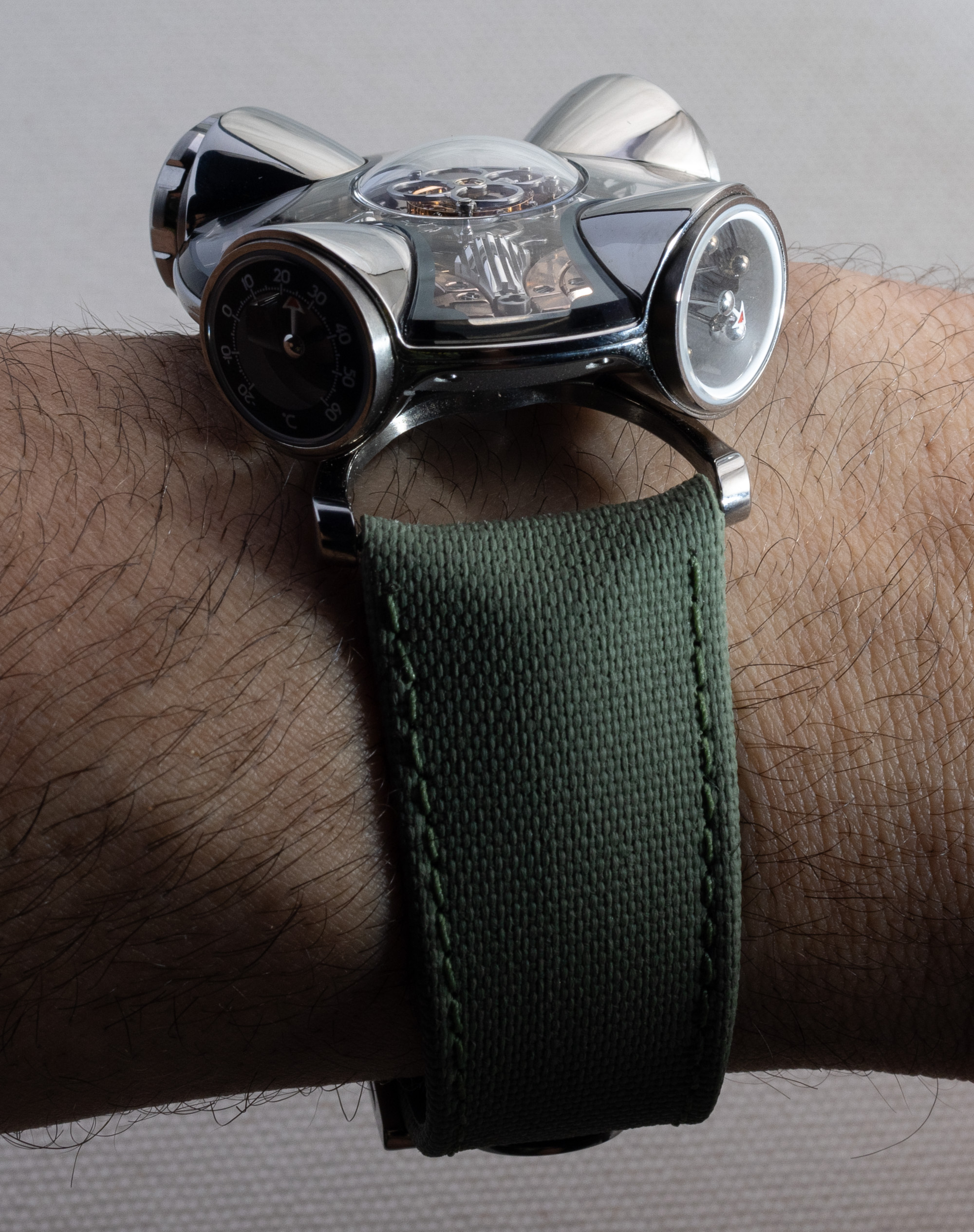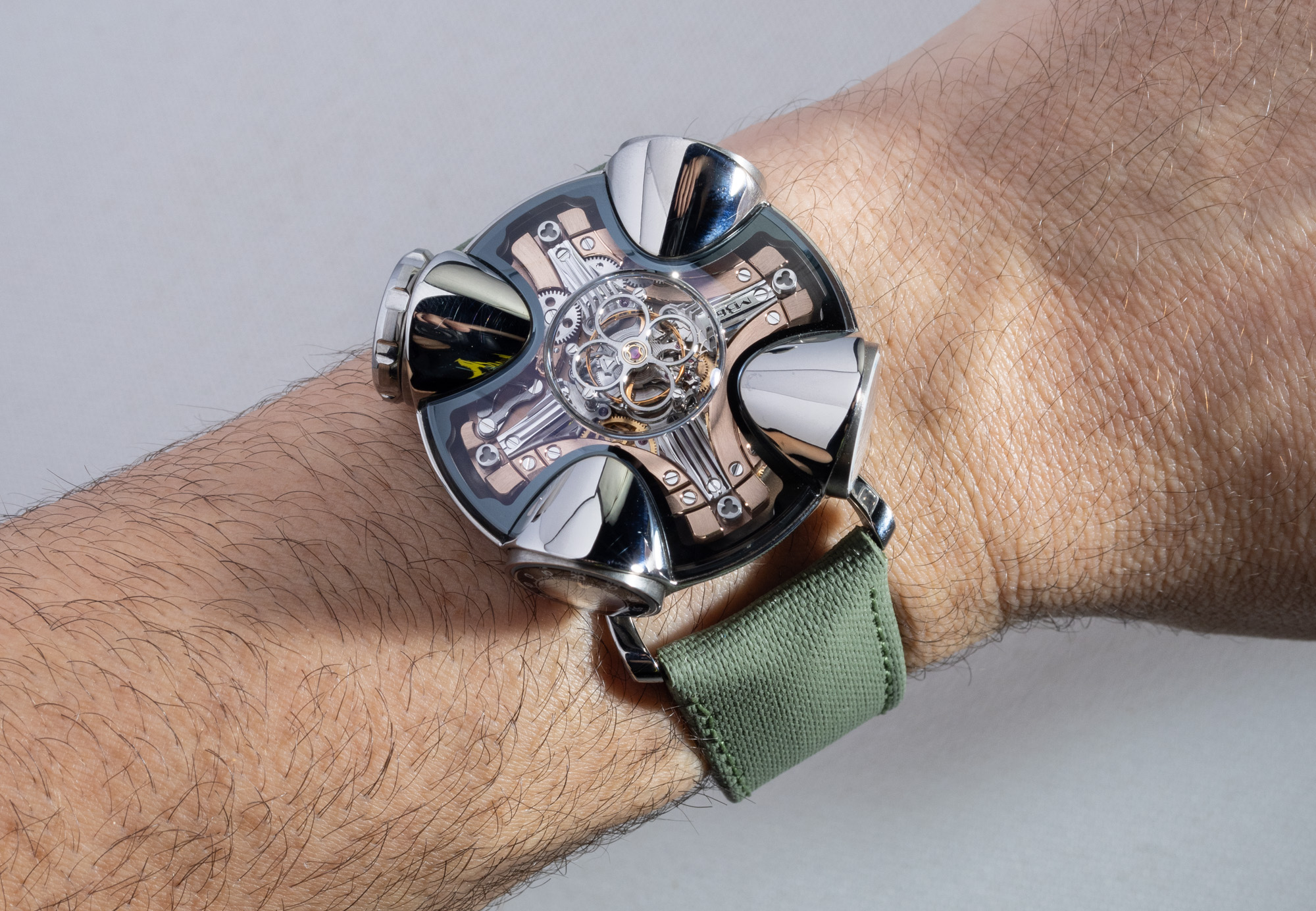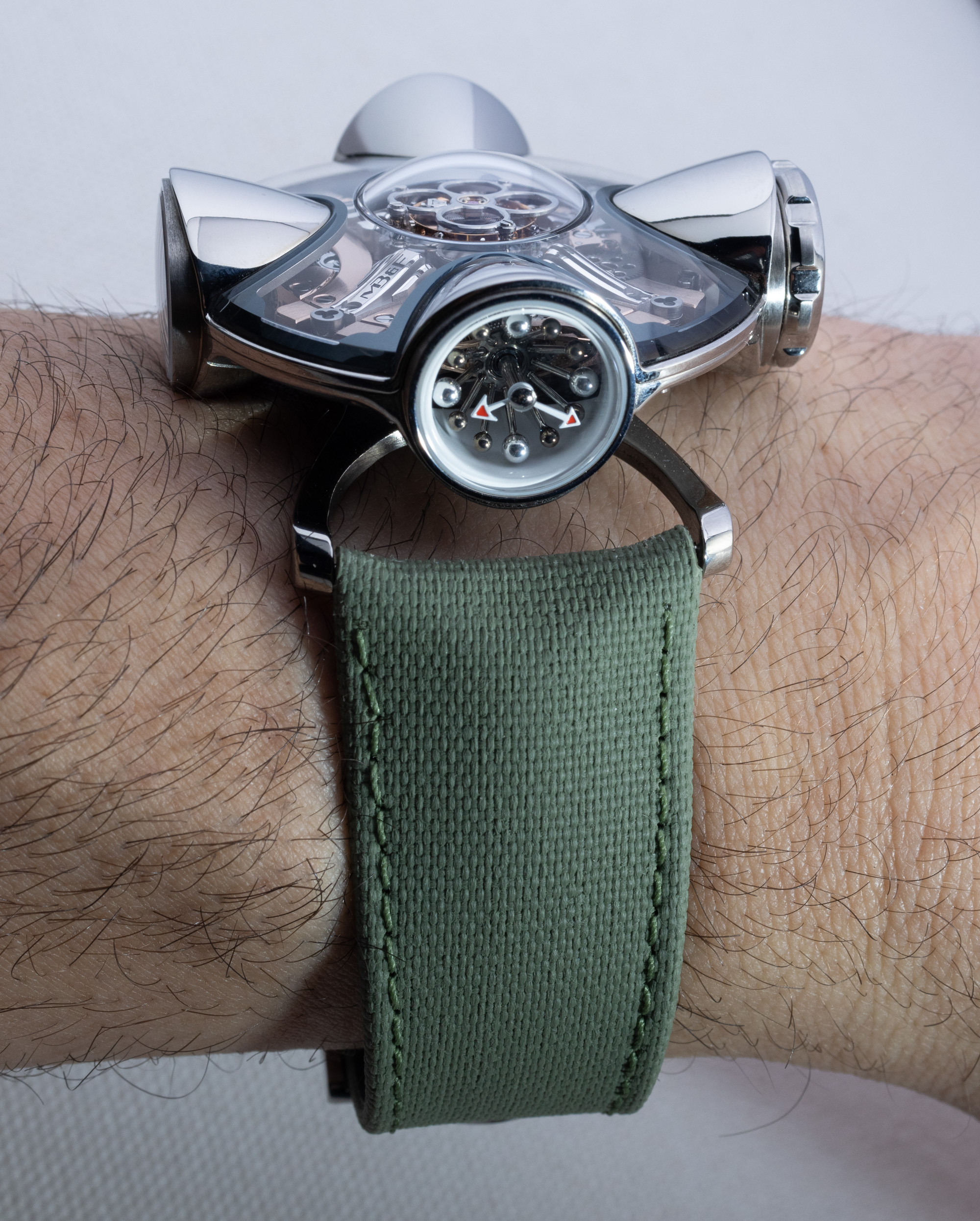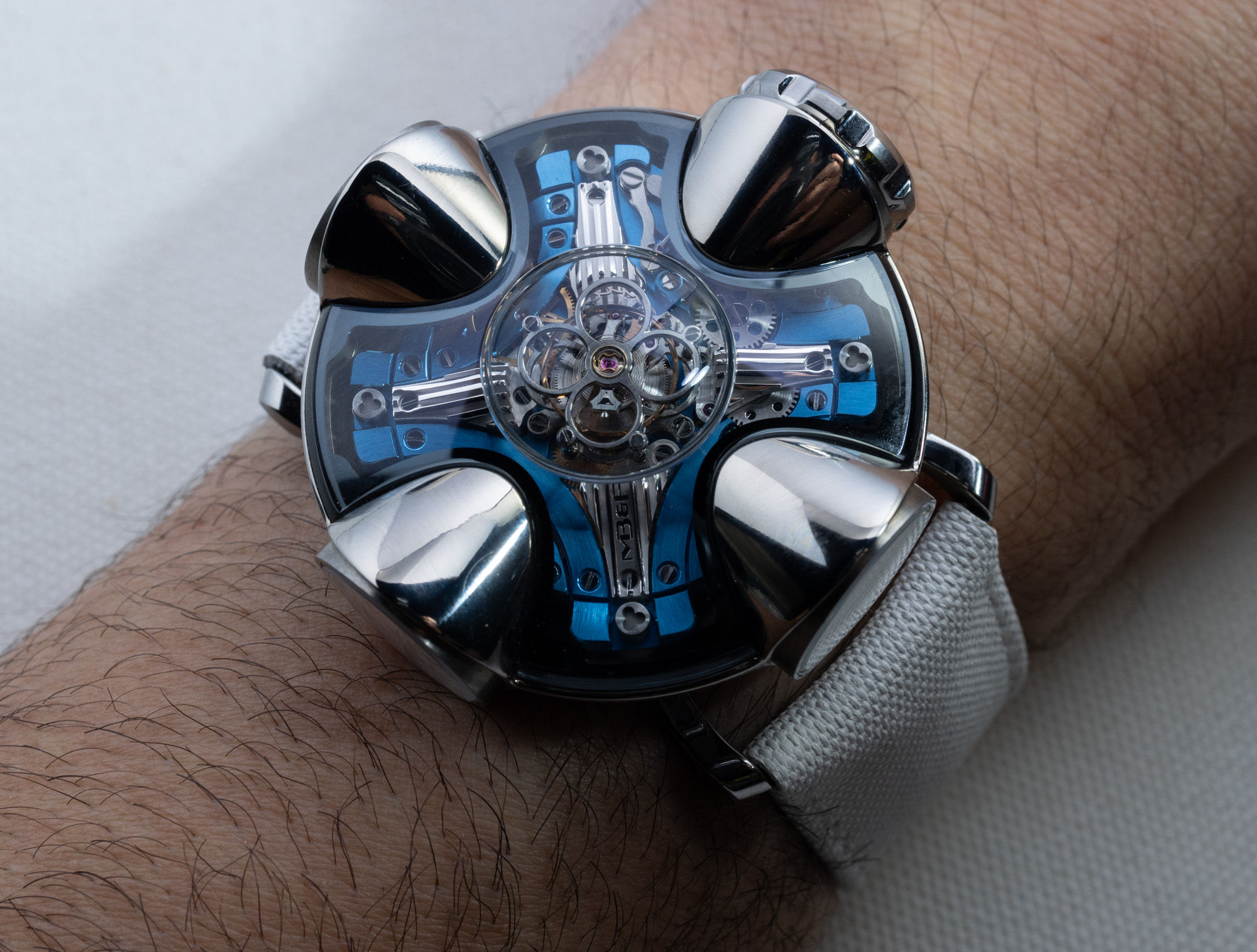
With the new for 2023 HM11 Architect watches, MB&F celebrates its DNA while also breaking free of routine. Some have argued that Max Busser’s industry-changing MB&F brand became a bit too commercially focused over the last few years, with many products that seemed to have the interests of their retailers in mind more so than the fans. Having said that, Max Busser himself set the bar very high by coming out with totally novel watches on a regular basis. Maintaining that momentum while building an international business isn’t without significant challenges, even for veteran operators such as Mr. Busser. It is with that context that you can understand why, during the launch of Horological Machine Number 11, Max Busser was enthusiastic about this watch being so different. This was the Max Busser of yesterday, complete with detailed storytelling prior to the launch of the product and the personal touch of explaining his own journey as part of the watch development.
What we love about MB&F is the constant drive to push the boundaries of both traditional watchmaking mechanics and visual forms. The HM11 is really that side of MB&F at its best — away from redundant rounds of new limited-edition colors or watches that people say they want. I am still of the opinion that the best new MB&F is the one that no one says they want until they have gotten to know it for a while. The Horological Machine No. 11, as discussed in more detail in the original news articles, is based on 1960s-era futuristic architecture and the idea that timepieces are, in many ways, akin to small structures. In any event, we use very similar forms of appreciation to admire a good watch as we do a good structure. All that is different are the scales and purposes of the machines; otherwise, both a good watch and a good building require many of the same engineering and design principles.
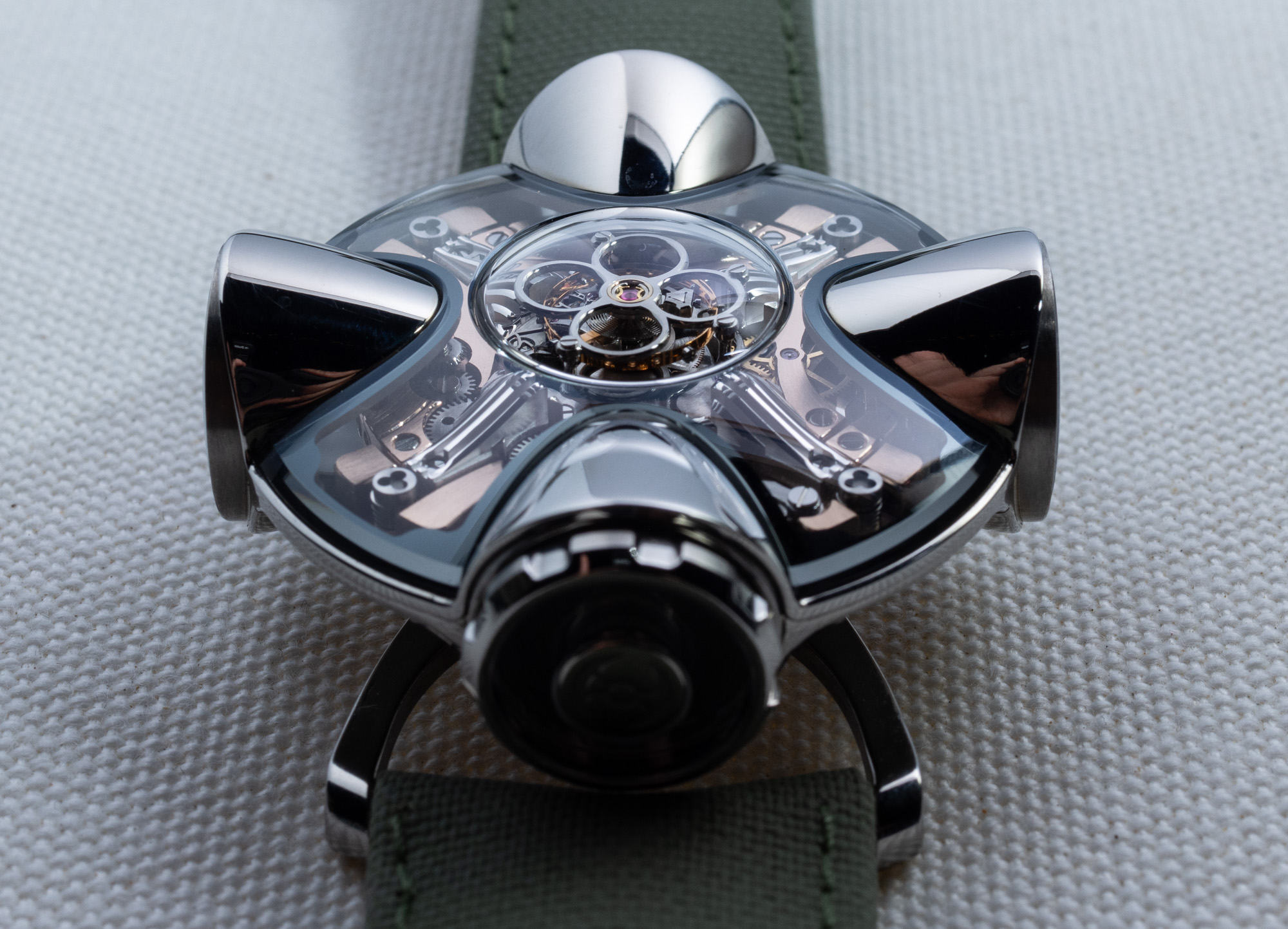
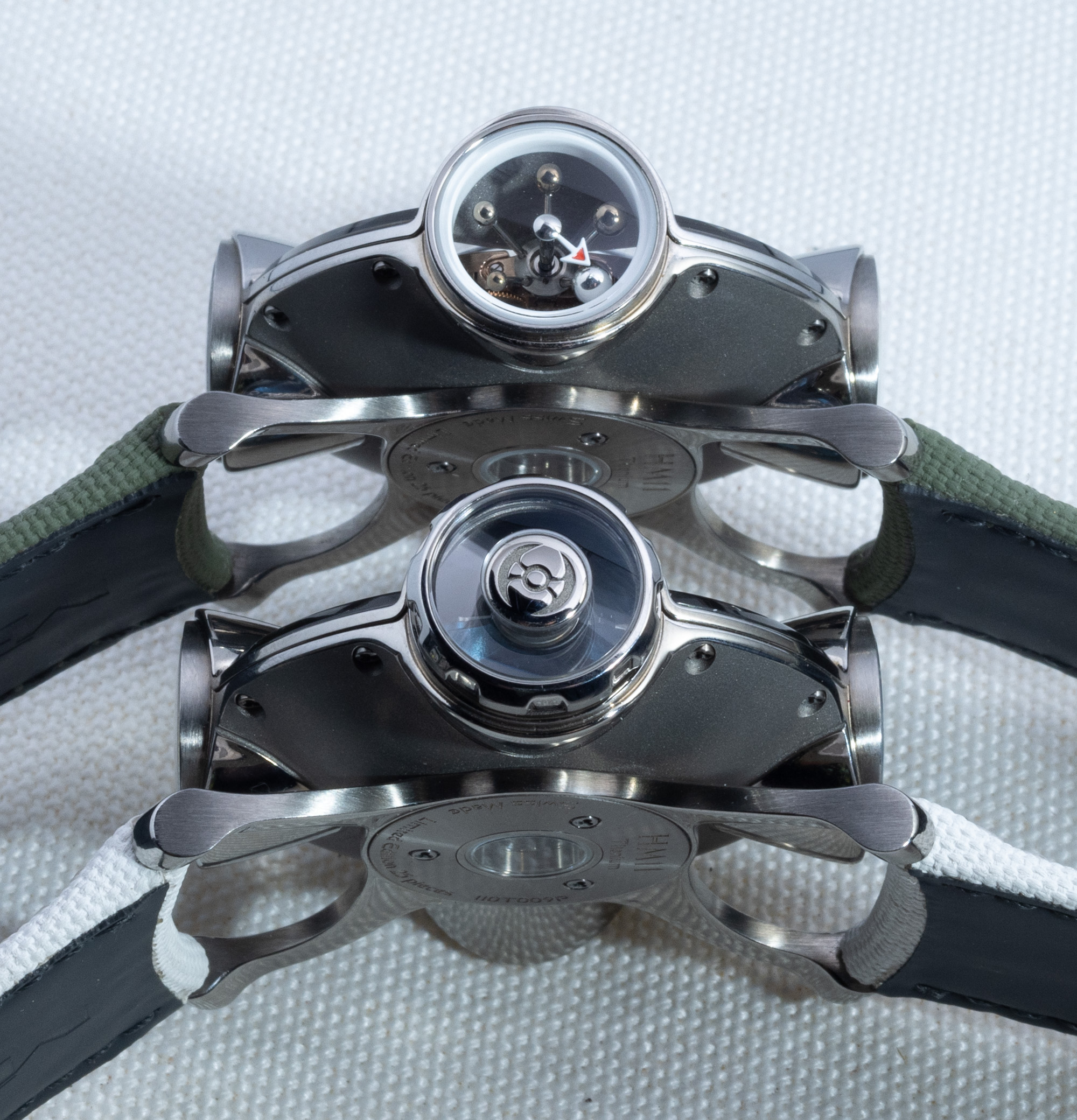
The HM11 Architect is designed like a radially symmetrical building, almost like a little flower for the wrist. It has windows all over it to see inside, along with four “rooms” that house various features such as the three dials or the crown. The watch case also turns on its own axis and has eight “stop” positions that allow flexibility on what your eyes see when you glance at the sides. The turning case is very new, but for a while now, MB&F has made “side reading” a very popular feature of many of its timepieces, especially the Horlogical Machine (HM) family that adopted this display style beginning with the HM4 that came out in 2010. The concept works well especially since the “top” of many such watches are equally fun to look at. While no information is indicated on the “roof” of the HM11 Architect, you do get a really nice view of the flying tourbillon in the center of it.
The HM11 is also very wearable. I discussed the full tech specs in the news articles, but the 42mm wide case is among the most compact in the HM collection, and despite the tallness, it does not feel like a bulky timepiece. It is also lightweight on the wrist, made from mostly titanium and sapphire crystal, with a highly curved lug structure that really does make for an impressively comfortable wearing experience. The case is extremely complex and rightfully so given what it is supposed to do. In addition to being a visual spectacle, the entire case has to turn (which also winds the watch) and needs to be water resistant (the watch offers 20 meters of resistance, which isn’t great, but you can wash your hands while wearing it, and of course needs to have a series of functional indicators. I found it interesting to learn that to assemble the watch, you need to first build parts of the movements, and then assemble them inside of the case, which is rather different from most watches that have movements entirely finished before being cased. The case uses nearly 20 different gaskets and some oddly shaped pieces of sapphire crystal for the construction. Put your ear up to it and you hear the soft clicking and ticking of the 2.5Hz balance wheel spinning inside of the touribllon cage.

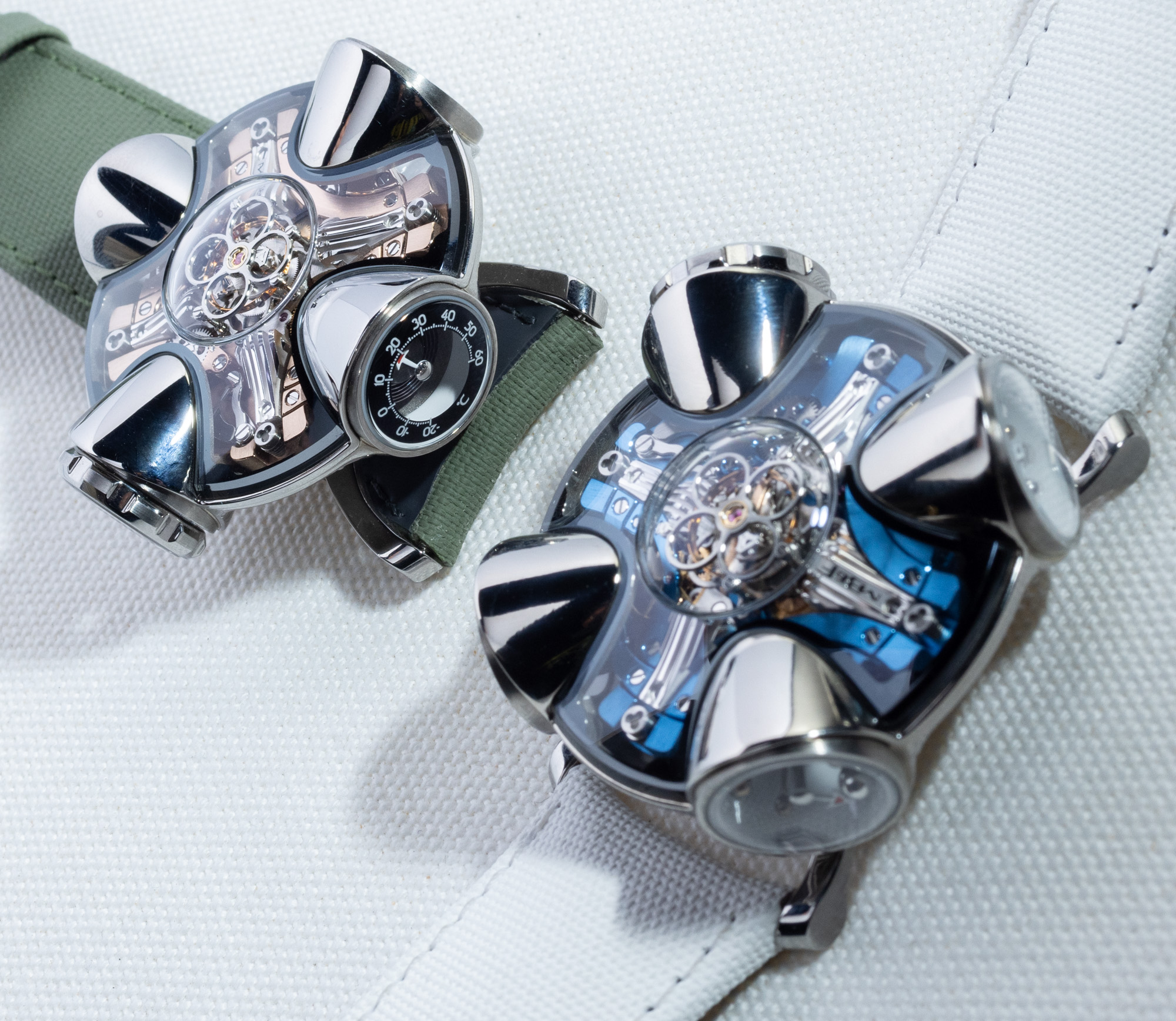
The crown is impressive but perhaps a weak point of the watch. It is nearly 10mm wide and has a neat-looking sapphire crystal ring in it that allows for further inspection of the truly beautiful movement. The crown’s complex construction allows for some water resistance, but not too much. It also adds some slight asymmetry to the case. What I would have actually done here is remove the crown altogether and replace it with a function selector button. Pushing it would scroll between winding and time-setting modes for the case-turning system. This way, the entire HM11 Architect case could actually be the crown, which would have been a cool story. Even as it is, the winding system is very impressive. While it is unknown how often the HM11 will need to be serviced because of this new system, MB&F designed a ball-bearing system on which the spinning case turns in order to reduce friction and, thus, wear and tear. Still, this isn’t a sports watch, and I would be very cautious about impacts hitting the side of the case, as I imagine the pinion system upon which the case connects to the lug structure is comparatively fragile.
A great part about using the case to wind the mainspring is that it both offers a lot of torque and is a fun (albeit expensive) object to play with. I don’t imagine most people wearing this will ever see the power reserve indicator drop too low on account of how often they will be turning the case when needing to fidget with their hands. The total power reserve of the manually wound movement is 96 hours, and it takes just 10 turns of the case to fully wind it. The pyramid-esque movement uses conical gears to move power or information out to the time dial and power reserve indicator. The other complication is a thermometer, which does not require any power and so is not actually connected to the rest of the movement.
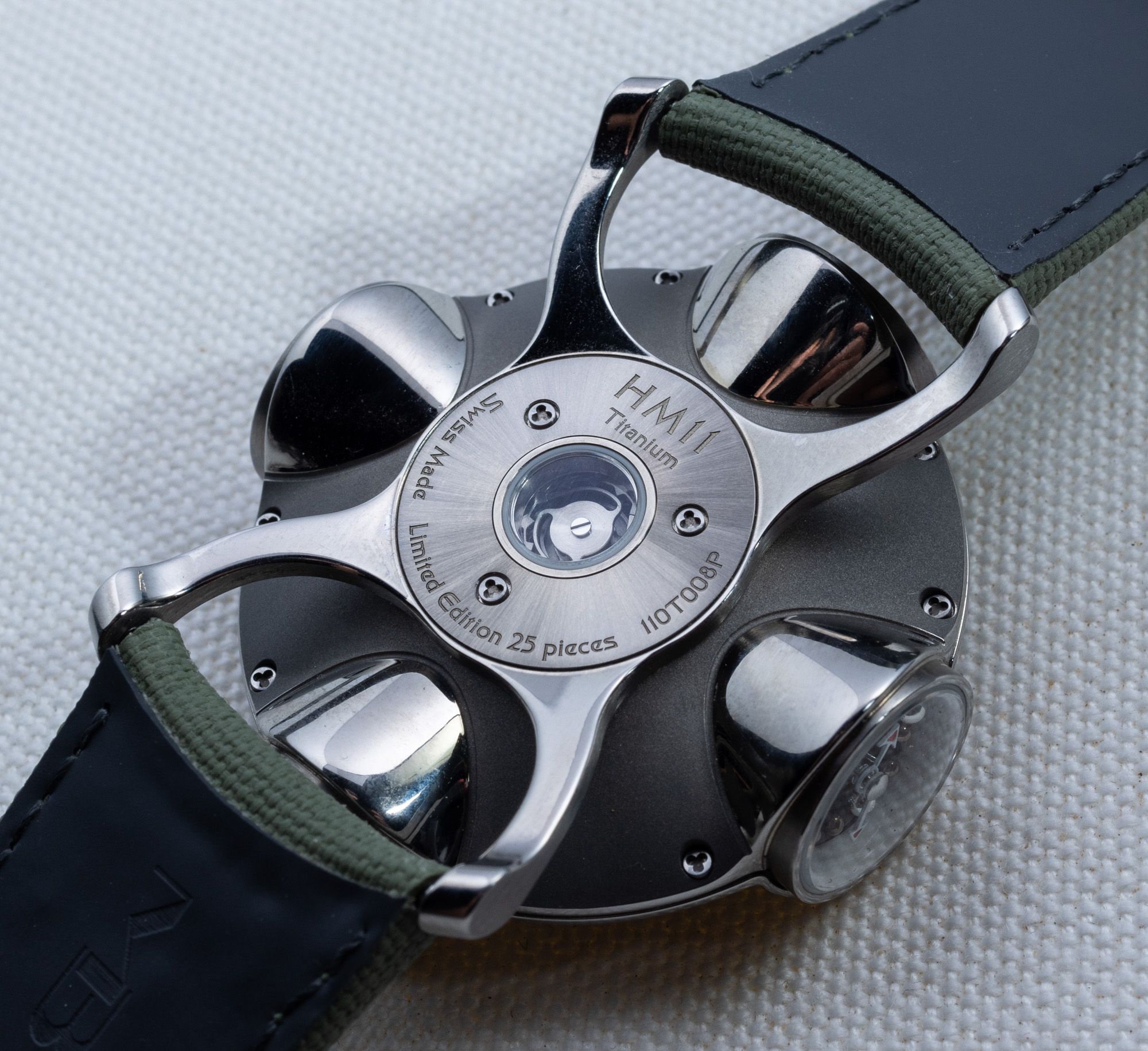
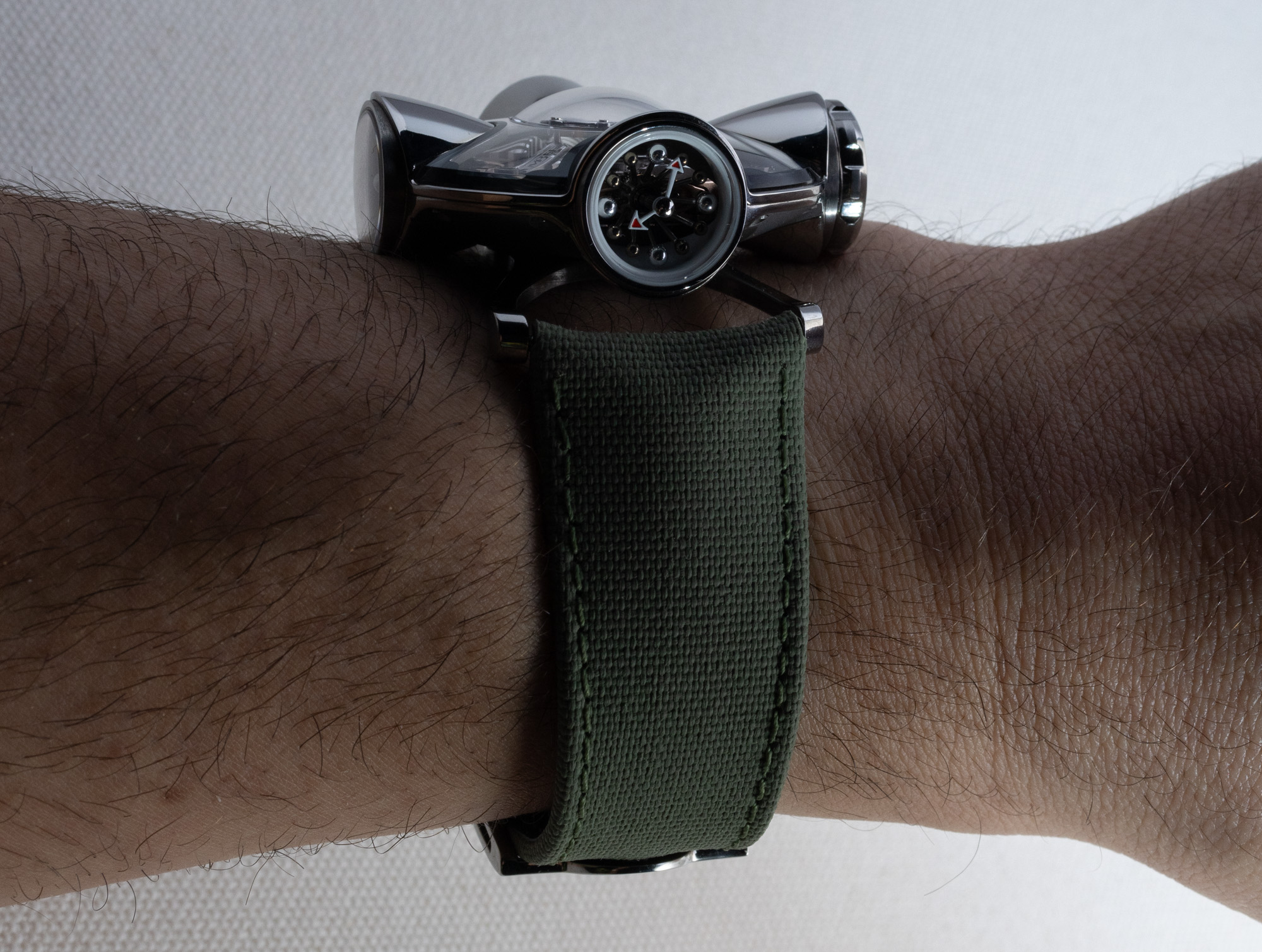
Mechanical thermometers are a rare treat in watches, and most of them have limited functional value. Max Busser chose this feature since it is true that houses often have them, and it is not a feature he has included in other MB&F watches before. MB&F claims that because the watch sits a bit above the wrist, the thermometer is not as influenced by your body temperature. I found that the case is probably still influenced by your body temperature, so it is best to remove it for a few minutes before getting a reading of the ambient temperature. MB&F used a boutique German tools supplier for some of the specialized parts necessary for the thermometer complication to work. One that I found interesting is that MB&F will also produce Fahrenheit scale versions of the HM11’s thermometer, in addition to the Centigrade models. However, the number of each type will depend on how many retailers in the United States opt for Fahrenheit versions of the HM11. MB&F clarified that it is possible to change the thermometer from one scale to another, but a watchmaker would need to replace the dial and recalibrate the thermometer system.
Reading the time is not too difficult, though the dial is on the smaller side. The hands for the time and power reserve dial are rather legible, but you still need good eyes for these petite windows. The dials are inspired by 1960s-era “ball wall clocks” and must each be assembled by hand, much to the chagrin of the watchmakers involved, given the delicacy of the task. Speaking of that, MB&F claims that it will take about 18 months for the 50 total limited-edition pieces of the HM11 Architect to be produced and assembled. That is between two titanium versions that differ only with the strap (khaki green or white texture rubber) and the color of the movement mainplate (PVD-coated rose gold-tone or blue).
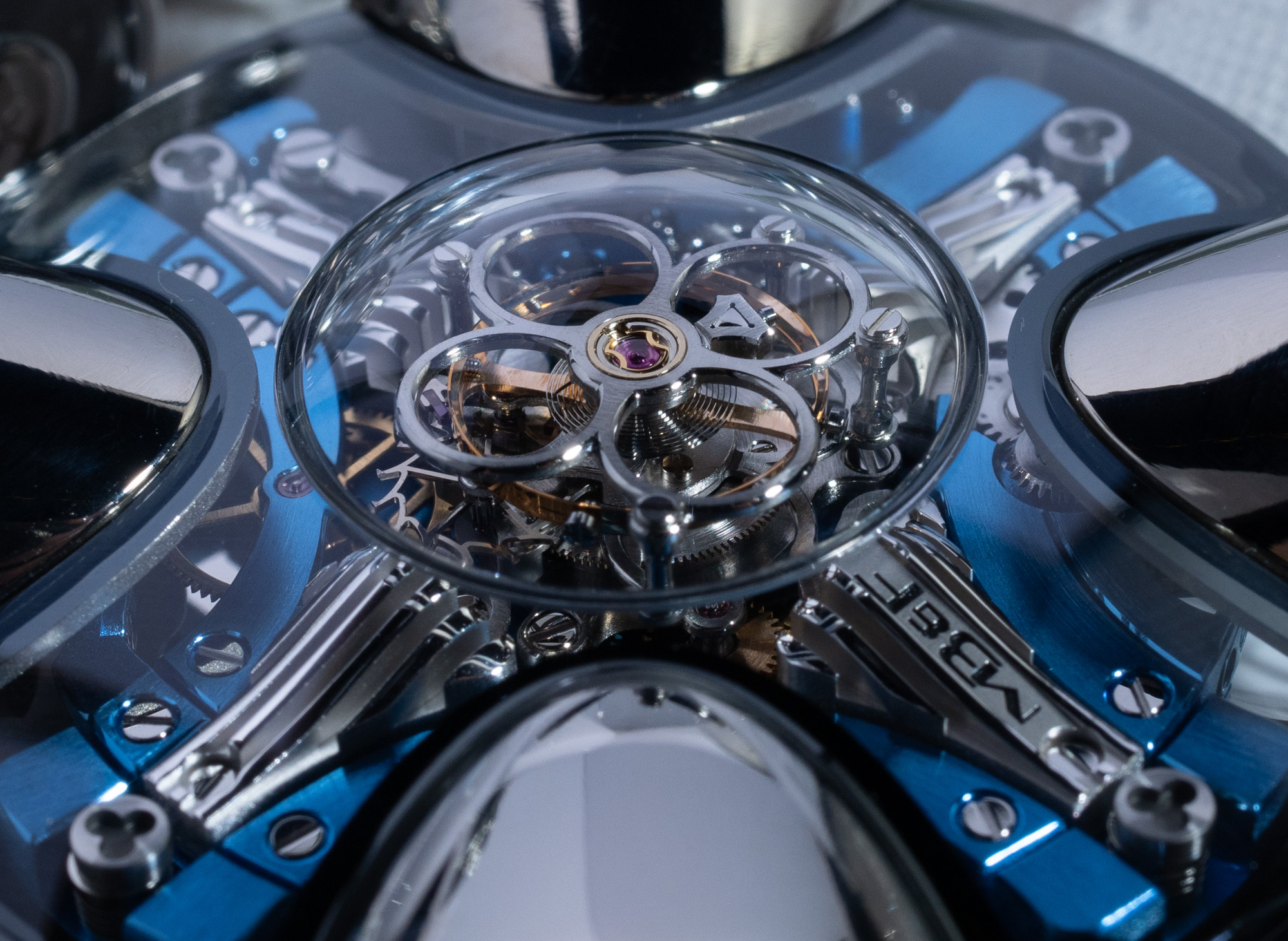
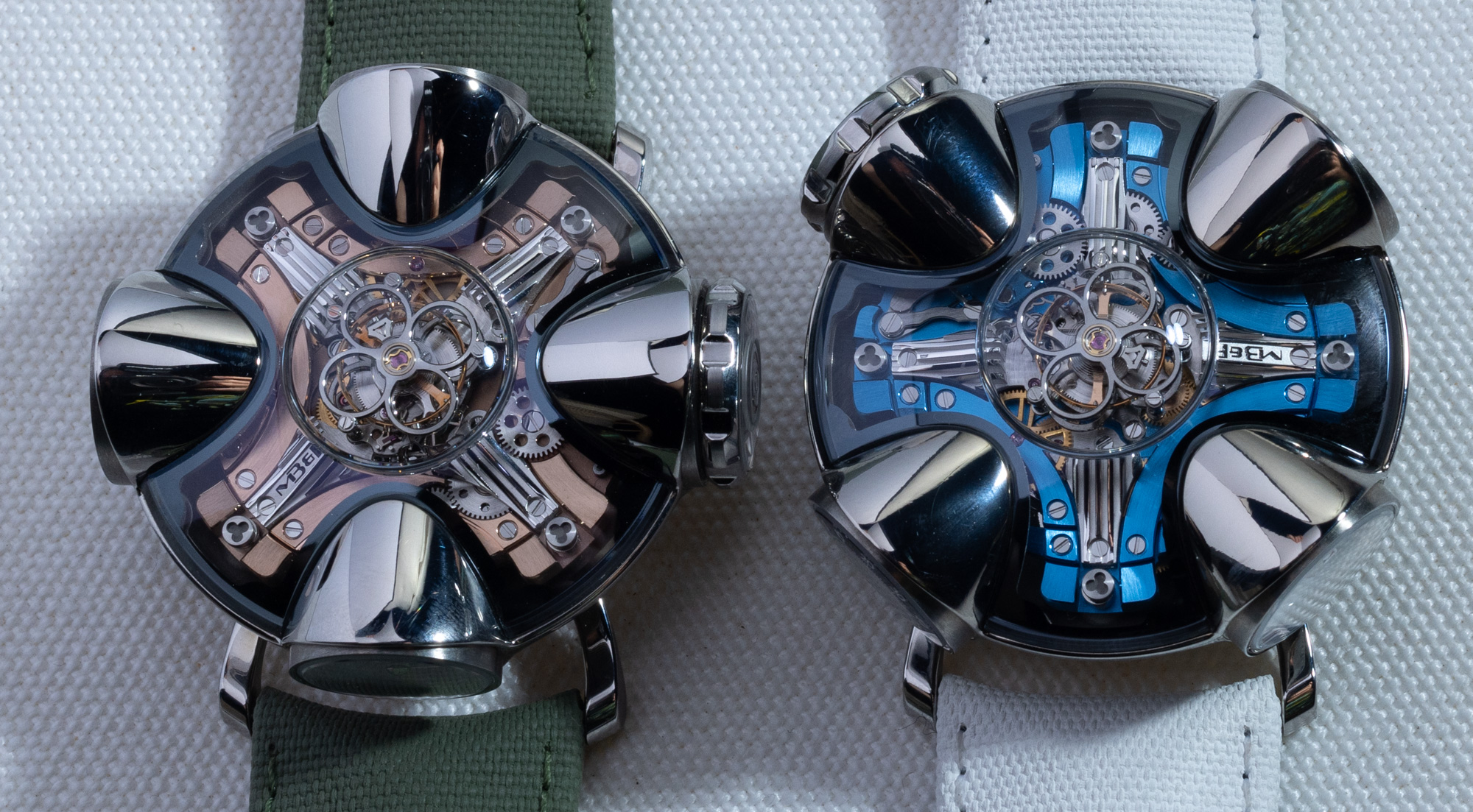
Fans of MB&F will really enjoy the HM11 Architect in both versions. Future HM11 watches may come, but MB&F has made it rather clear that it probably won’t just be color variants, and at least some other minor things will change. The company seems to have the most fun with its HM versus LM (Legacy Machine) models, and you can see that the entire MB&F team enjoyed working on the HM11 since the project began back in 2018. Fun (if you can afford it) is really the best way to describe the beautiful and expressive HM11 Architect. While appreciating this luxury watch, one also forms the desire for MB&F to build a full-size version of the Architect (with a door) that we can personally enter. Perhaps someday… and perhaps we will also see an era when buildings are inspired by watches as much as watches are inspired by buildings. Thanks for keeping it interesting, MB&F! Price for the MB&F HM11 Architect watch is $230,000 USD. Learn more at the MB&F website.

